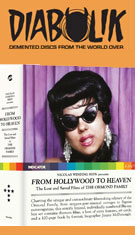
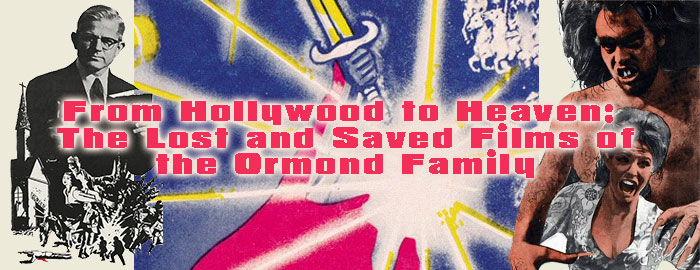


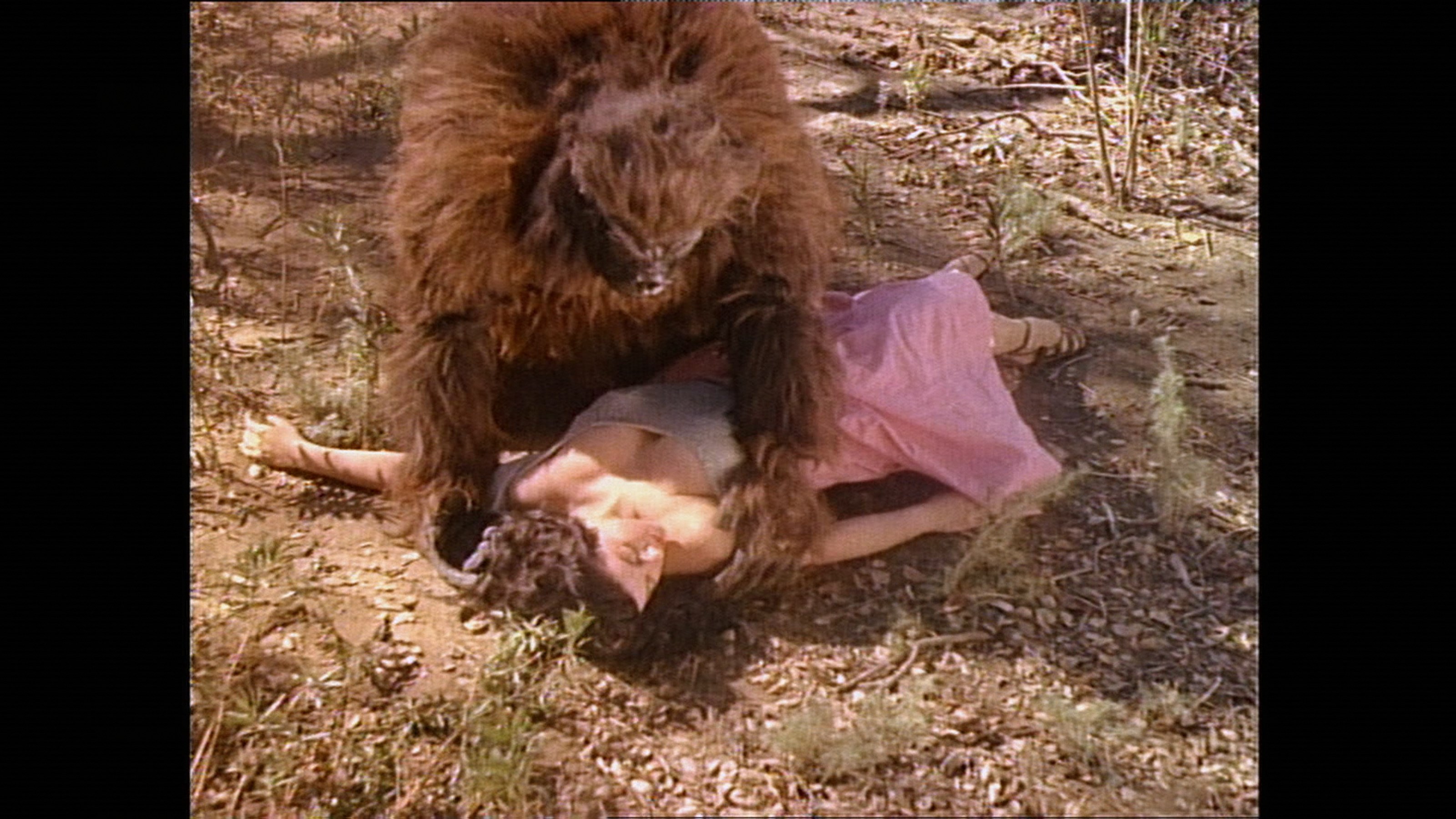 holdings of Tim Ormond, so standard definition masters have been used for that period. The set is also
holdings of Tim Ormond, so standard definition masters have been used for that period. The set is also 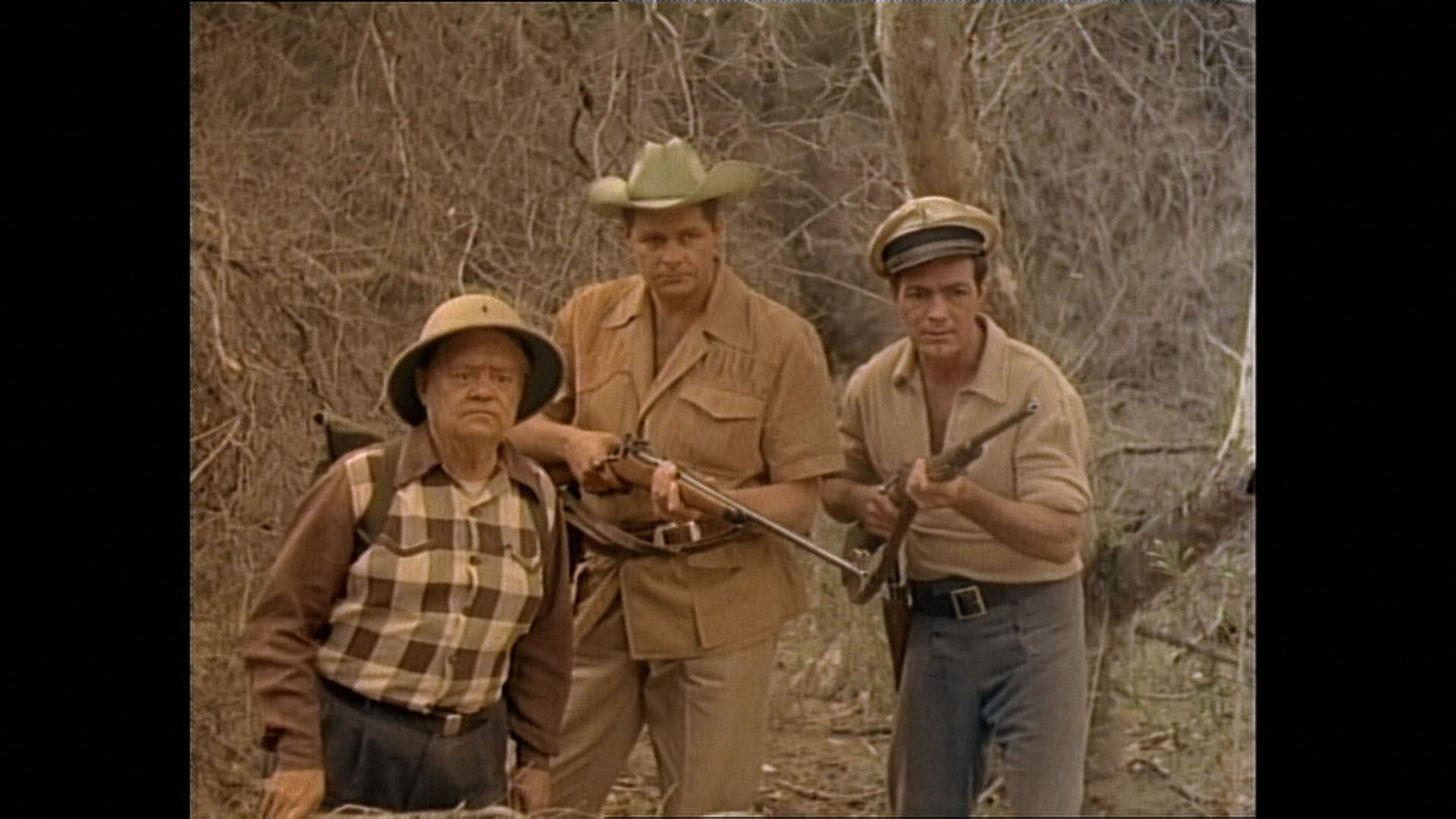 timed with the release of The Exotic Ones, Jimmy McDonough's expansive book about the Ormonds; both the Blu-ray box and the book are presented by Nicolas Winding Refn, whose once thriving bynwr.com site debuted some of the restorations here. McDonough is all over this set as well, including providing the essential and flavorful text for the enclosed 100-page illustrated book as well.
timed with the release of The Exotic Ones, Jimmy McDonough's expansive book about the Ormonds; both the Blu-ray box and the book are presented by Nicolas Winding Refn, whose once thriving bynwr.com site debuted some of the restorations here. McDonough is all over this set as well, including providing the essential and flavorful text for the enclosed 100-page illustrated book as well.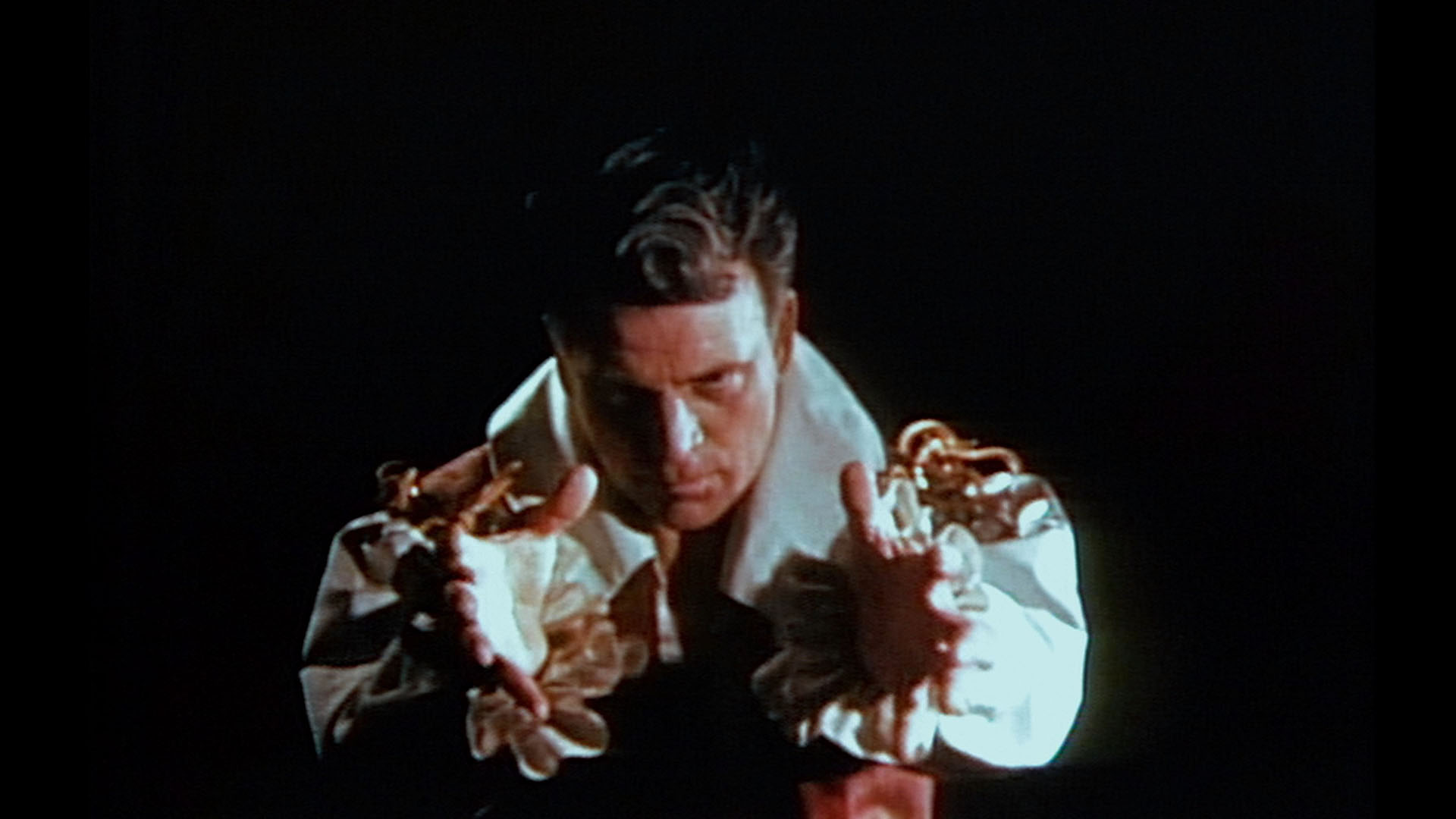 theatrical
theatrical 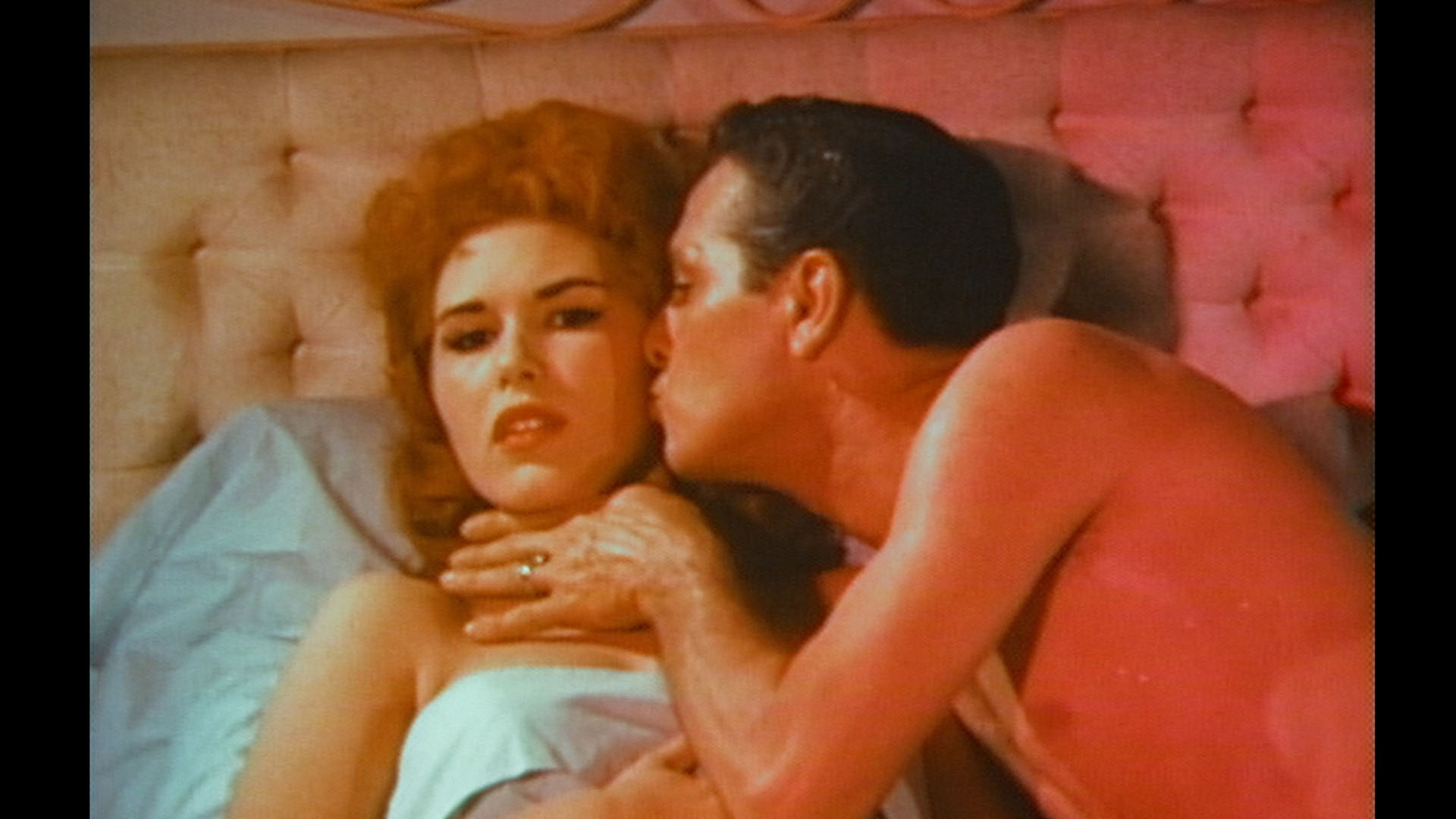 print.
print. 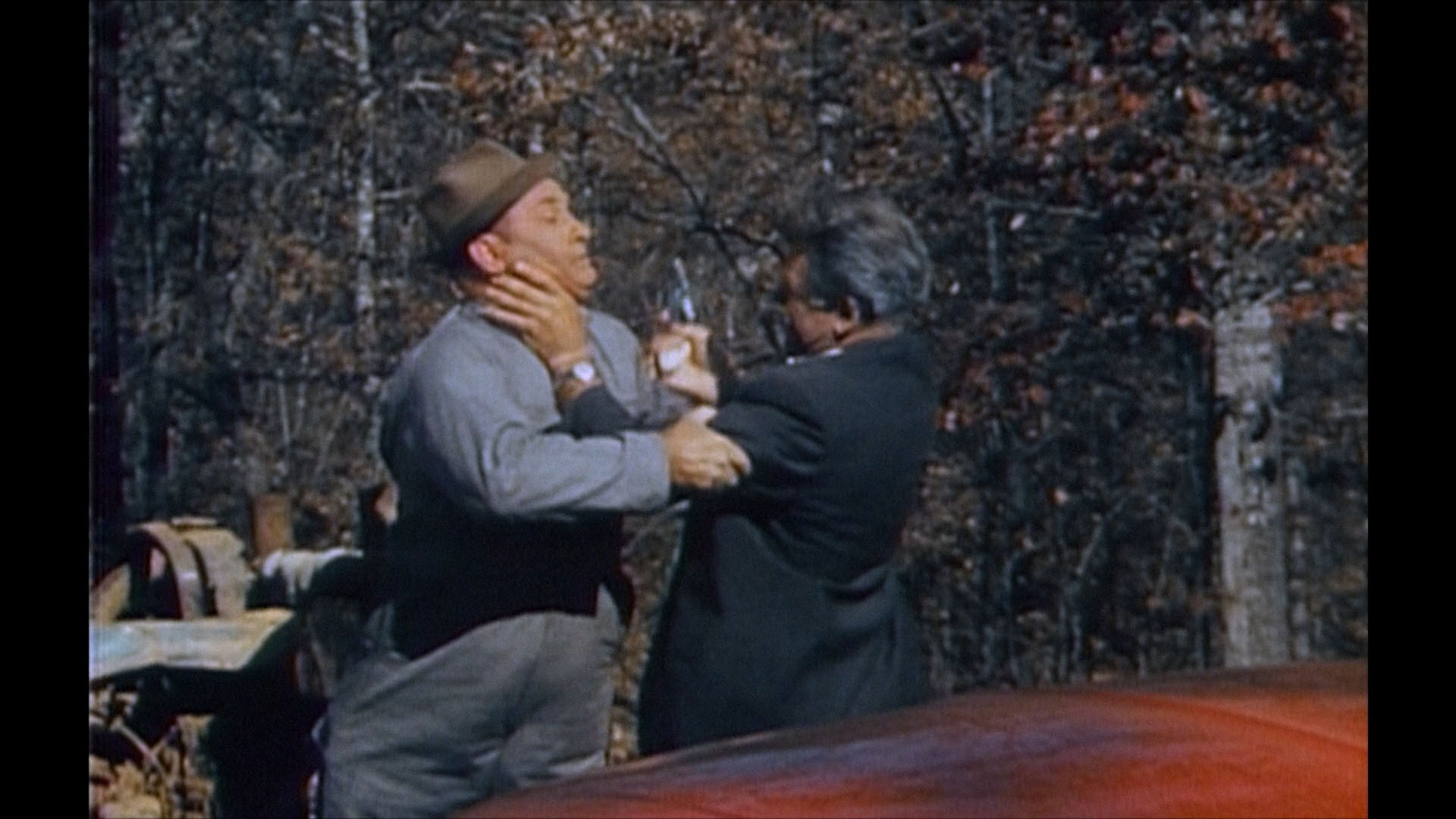 display.
display.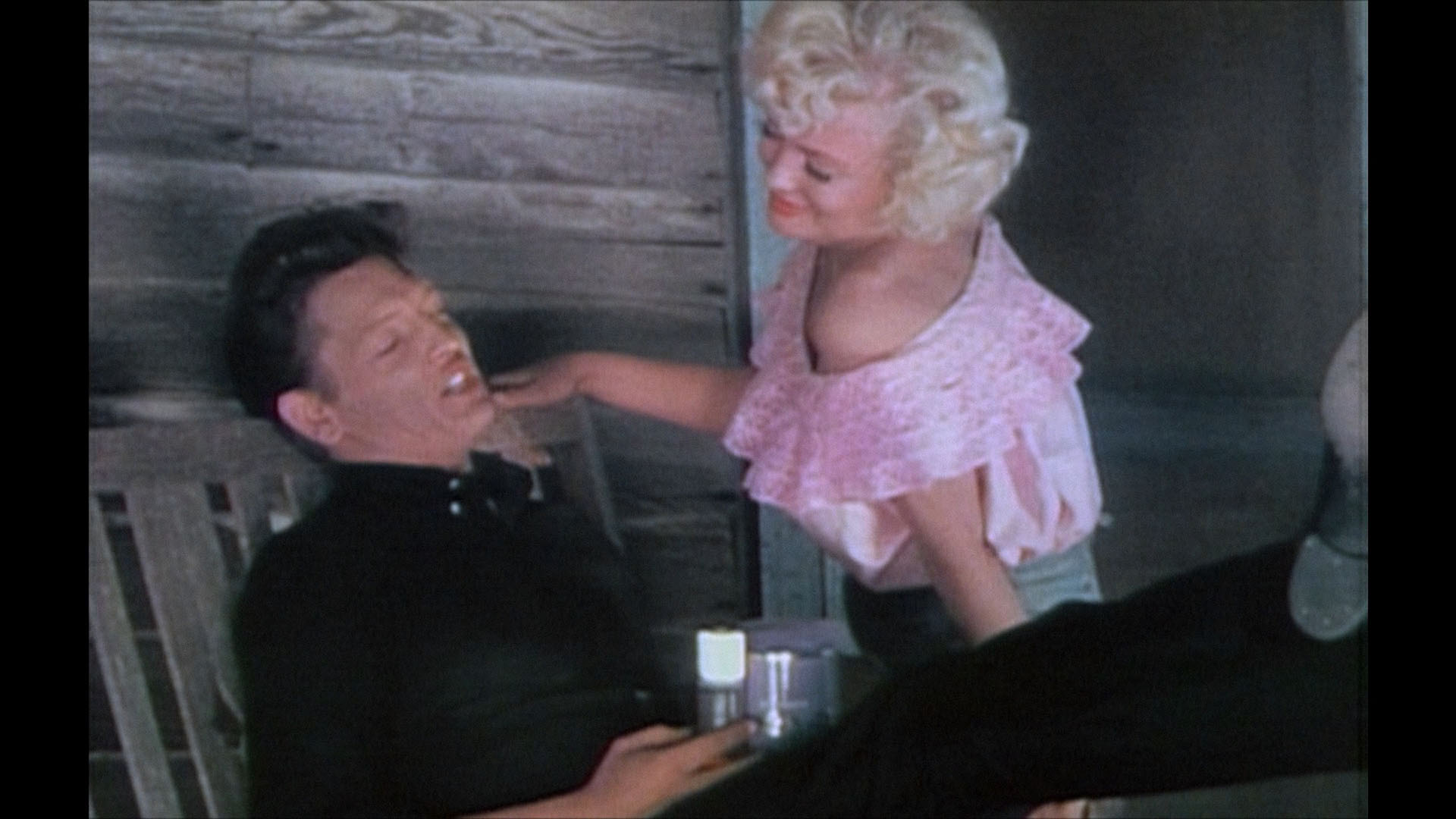 Finally disc one wraps up with 1964's White Lightnin' Road (95m9s), a full-color backwoods film obviously inspired by Thunder Road and featuring some really hoppin' jazz music. Mixing up stock car racing footage and moonshine bootlegging shenanigans, it's a standard programmer of the era with a wannabe Marilyn Monroe star in Arline Hunter and lots of location shooting in Nashville, which remained home base for the Ormonds from that point onward. Amidst all the racing footage you also get the on-camera debut of little Tim Ormond, who would appear in the lion's share of the family productions going forward. He's discomfiting as a child actor, but eventually Tim would grow into a more comfortable screen presence. Both this film and Please are presented at the odd aspect ratio of 1.55:1 (as are some other later titles), presumably matting off some excess info from the open matte video transfers created in the '90s. Also included here are the bizarre short Edge of Tomorrow (49m11s) with apparent conman and occasional Ormond thespian Reinhold O. Schmidt yapping on and on about UFO crackpottery, plus a trailer ("The drivers called her a pit tramp!") and radio spots for White Lightnin' Road.
Finally disc one wraps up with 1964's White Lightnin' Road (95m9s), a full-color backwoods film obviously inspired by Thunder Road and featuring some really hoppin' jazz music. Mixing up stock car racing footage and moonshine bootlegging shenanigans, it's a standard programmer of the era with a wannabe Marilyn Monroe star in Arline Hunter and lots of location shooting in Nashville, which remained home base for the Ormonds from that point onward. Amidst all the racing footage you also get the on-camera debut of little Tim Ormond, who would appear in the lion's share of the family productions going forward. He's discomfiting as a child actor, but eventually Tim would grow into a more comfortable screen presence. Both this film and Please are presented at the odd aspect ratio of 1.55:1 (as are some other later titles), presumably matting off some excess info from the open matte video transfers created in the '90s. Also included here are the bizarre short Edge of Tomorrow (49m11s) with apparent conman and occasional Ormond thespian Reinhold O. Schmidt yapping on and on about UFO crackpottery, plus a trailer ("The drivers called her a pit tramp!") and radio spots for White Lightnin' Road. 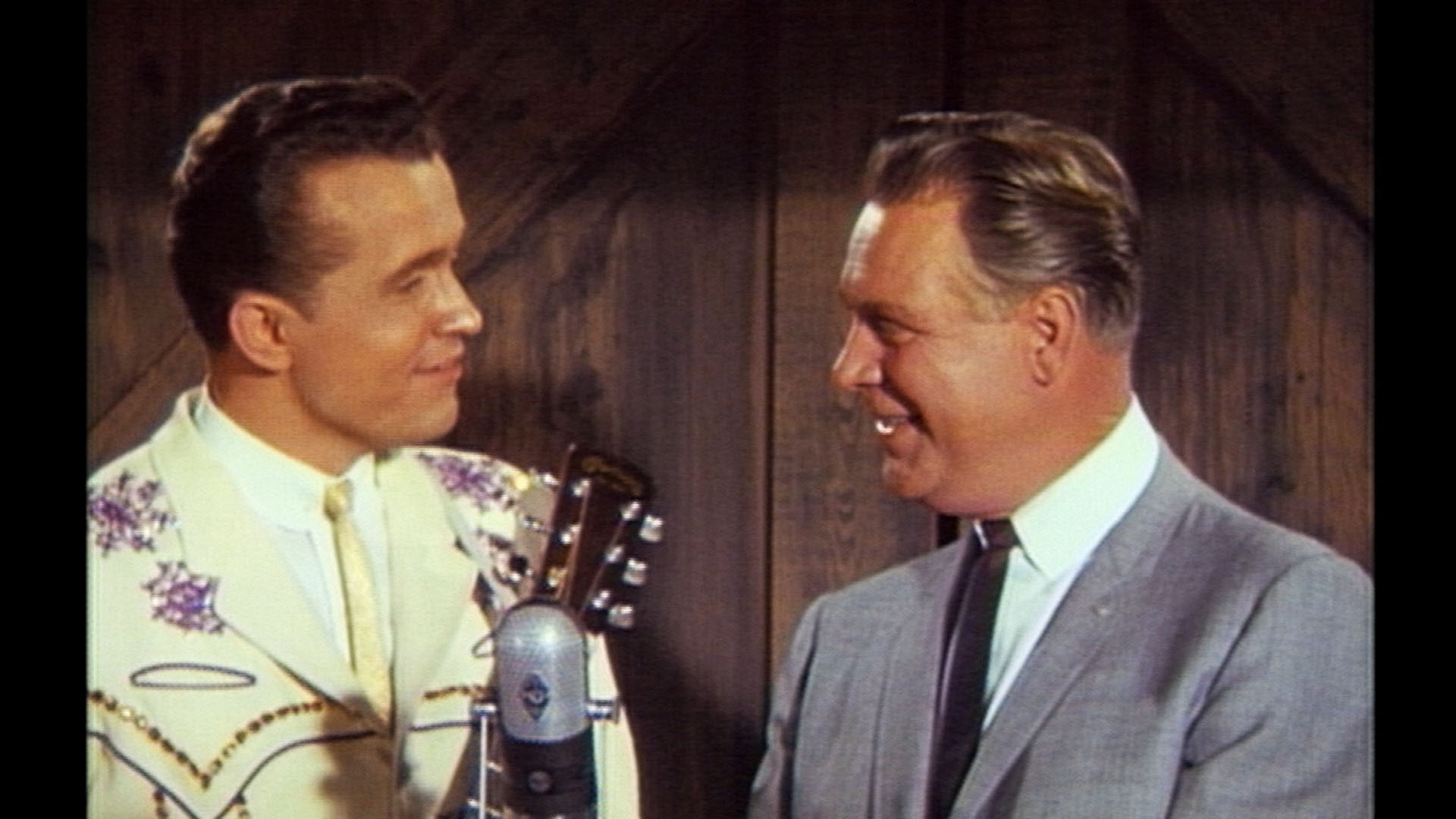 The backwoods
The backwoods 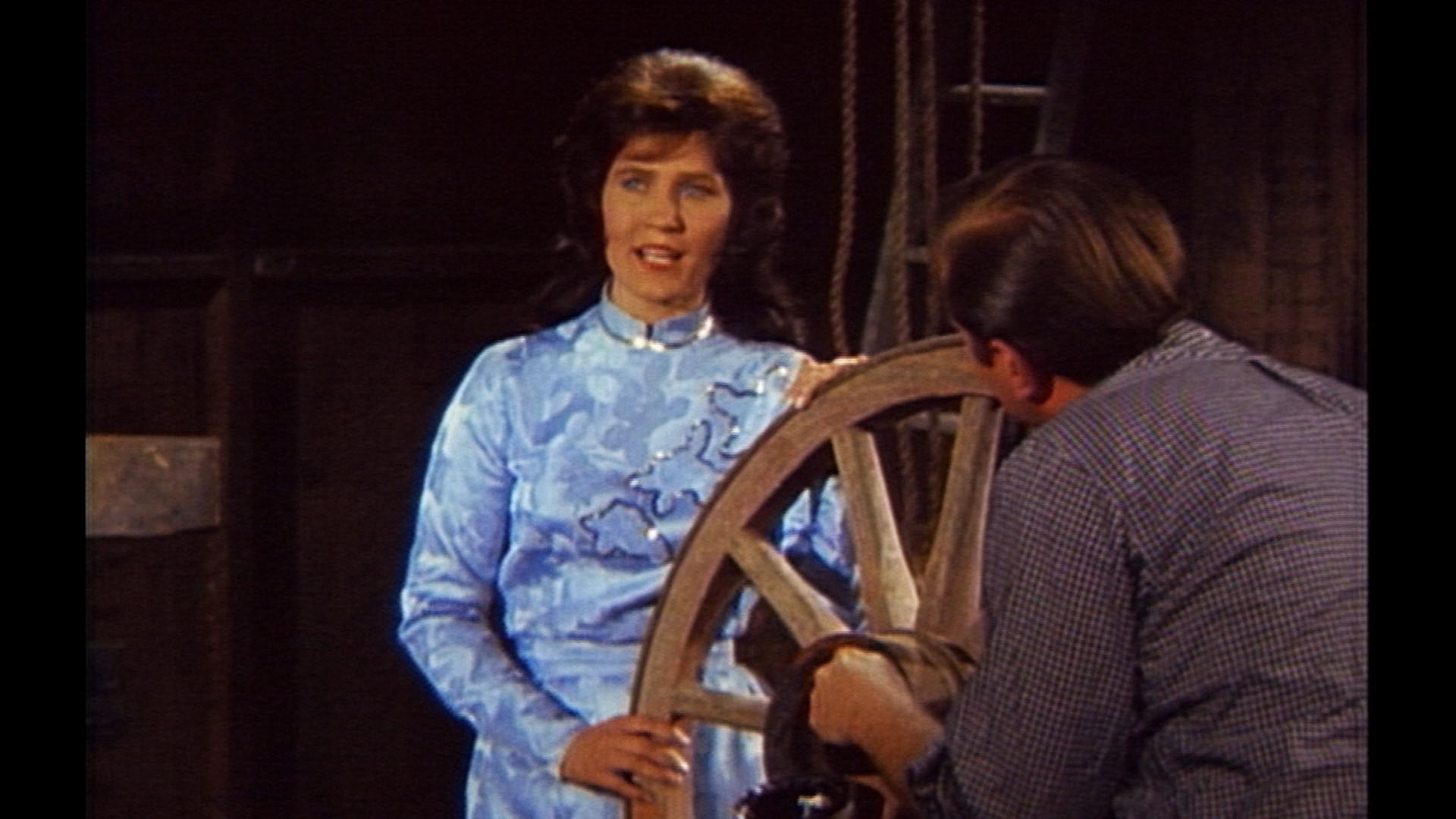 sensibility seen on disc one comes to the forefront on disc two starting with 1965's Forty Acre Feud (85m35s), an entertaining jamboree featuring substantial roles by none other than Minnie Pearl and Ferlin Husky (who's credited as "Simon" but gets called by his real name) among other country personalities doing a song or two like George Jones, Loretta Lynn, The Willis Brothers, and Ray Price. The country-fried fun involves the staging of the Smokey Mountain Jamboree at a time the locals are all buzzing about who's going to run for office as a state representative. (Also, nobody seems to know quite what that job entails.) Mostly though this is an excuse to parade out one musical number after another, and there's a colorful charm here in what amounts to a bunch of country and western Scoptiones stitched together in a way that predates U.S. TV staples like Hee Haw and Barbara Mandrell & the Mandrell Sisters.
sensibility seen on disc one comes to the forefront on disc two starting with 1965's Forty Acre Feud (85m35s), an entertaining jamboree featuring substantial roles by none other than Minnie Pearl and Ferlin Husky (who's credited as "Simon" but gets called by his real name) among other country personalities doing a song or two like George Jones, Loretta Lynn, The Willis Brothers, and Ray Price. The country-fried fun involves the staging of the Smokey Mountain Jamboree at a time the locals are all buzzing about who's going to run for office as a state representative. (Also, nobody seems to know quite what that job entails.) Mostly though this is an excuse to parade out one musical number after another, and there's a colorful charm here in what amounts to a bunch of country and western Scoptiones stitched together in a way that predates U.S. TV staples like Hee Haw and Barbara Mandrell & the Mandrell Sisters. 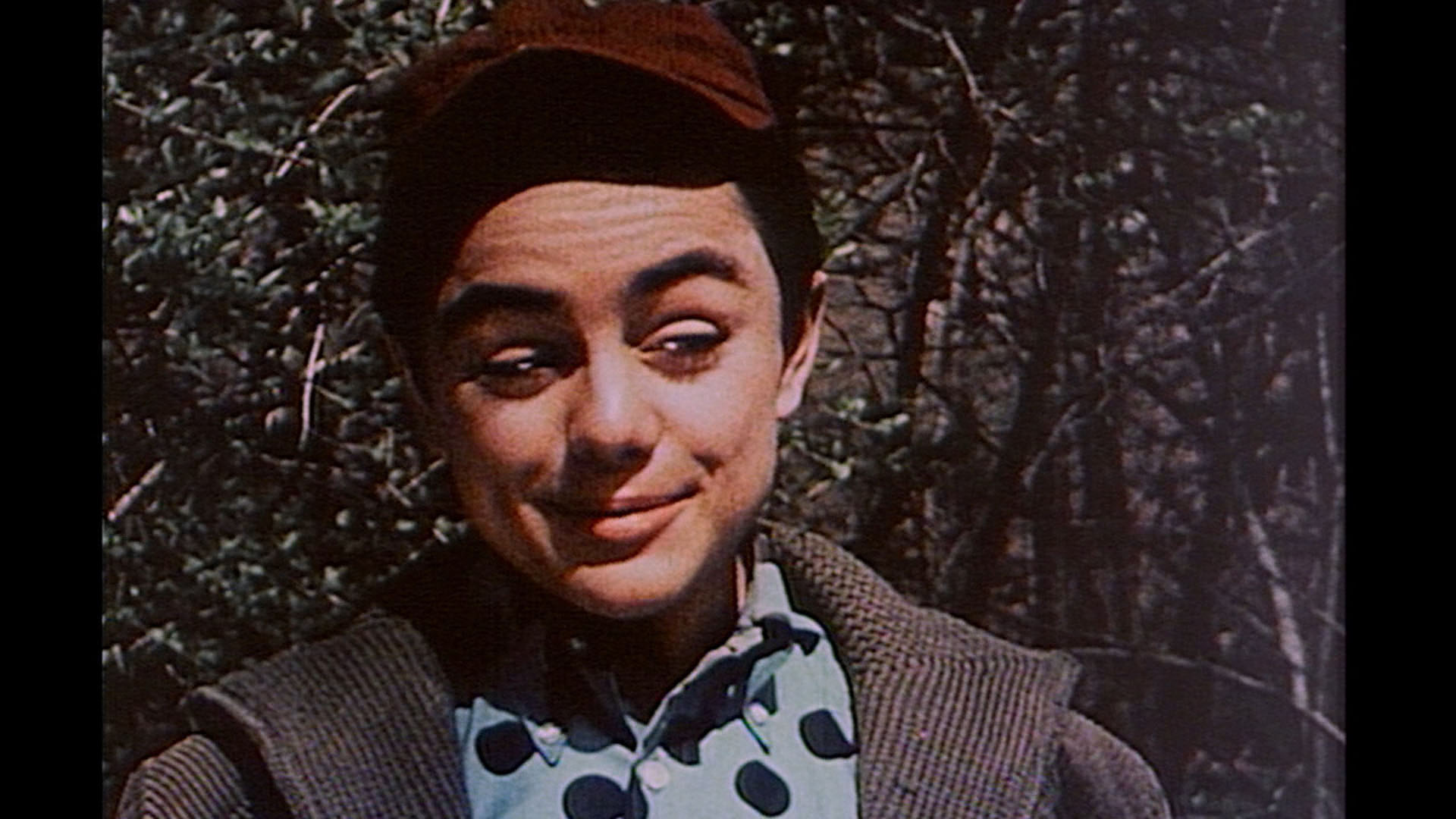 1966's Girl from Tobacco Row (86m27s), with country singer Tex Ritter
1966's Girl from Tobacco Row (86m27s), with country singer Tex Ritter 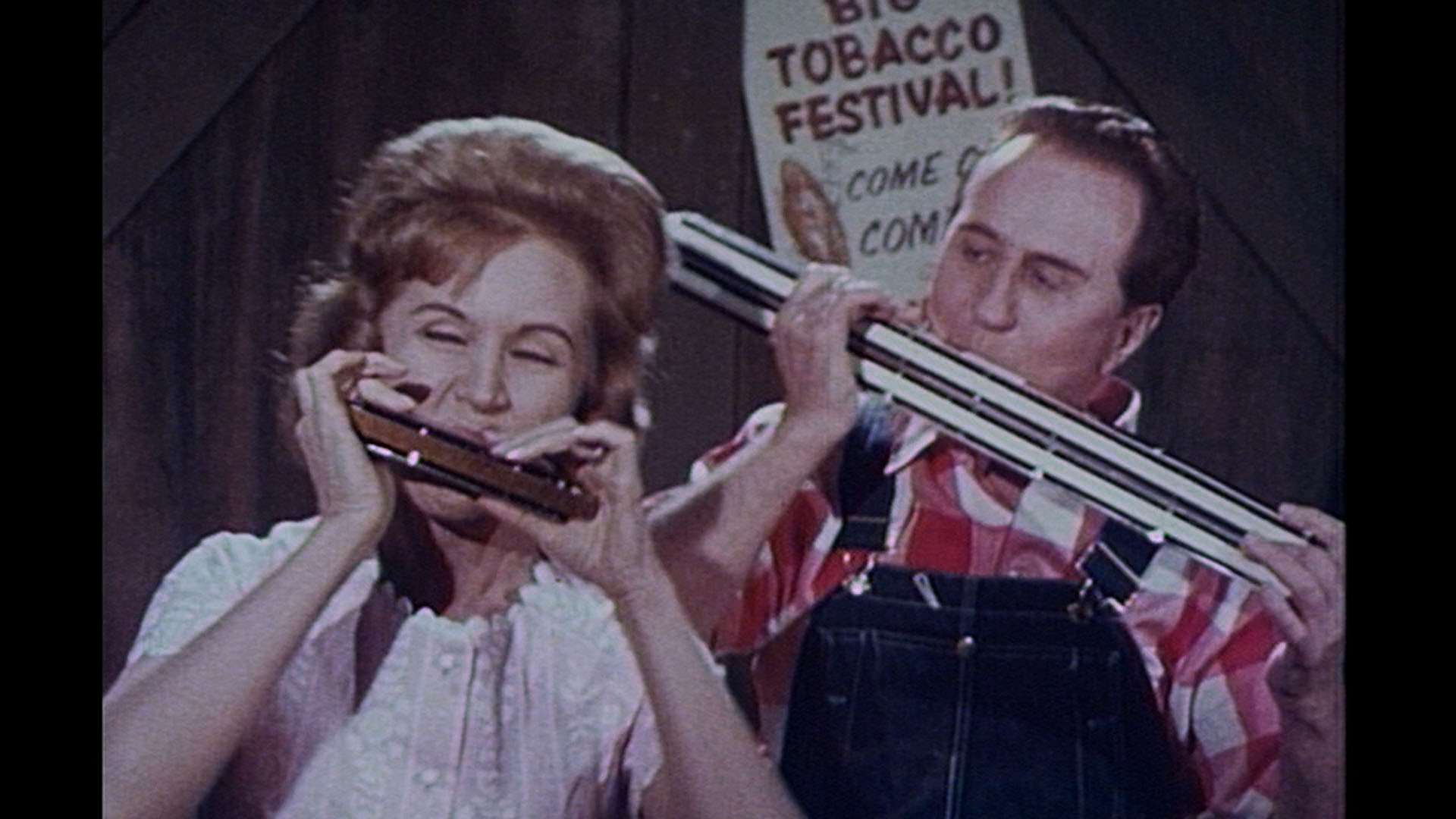 appearing as the stern preacher dad of Nadine (Rachel Romen), a young lady who's easily led astray. Enter a con on the lam named Snake who's hunting for some stashed stolen cash and ends up being taken in by the reverend's family (including Tim again as the little brother). The title and poster pitched this as a sexy country romp, though Nadine isn't really the focus and it all veers into heavy religious sermonizing foreshadowing where the Ormonds would soon be heading. Of all the main features here, this one's in the worst shape but the film is nice to have for posterity -- including an appearance by the world's biggest harmonica and the injection of more stage blood than before, an indication of what would come in our next title...
appearing as the stern preacher dad of Nadine (Rachel Romen), a young lady who's easily led astray. Enter a con on the lam named Snake who's hunting for some stashed stolen cash and ends up being taken in by the reverend's family (including Tim again as the little brother). The title and poster pitched this as a sexy country romp, though Nadine isn't really the focus and it all veers into heavy religious sermonizing foreshadowing where the Ormonds would soon be heading. Of all the main features here, this one's in the worst shape but the film is nice to have for posterity -- including an appearance by the world's biggest harmonica and the injection of more stage blood than before, an indication of what would come in our next title...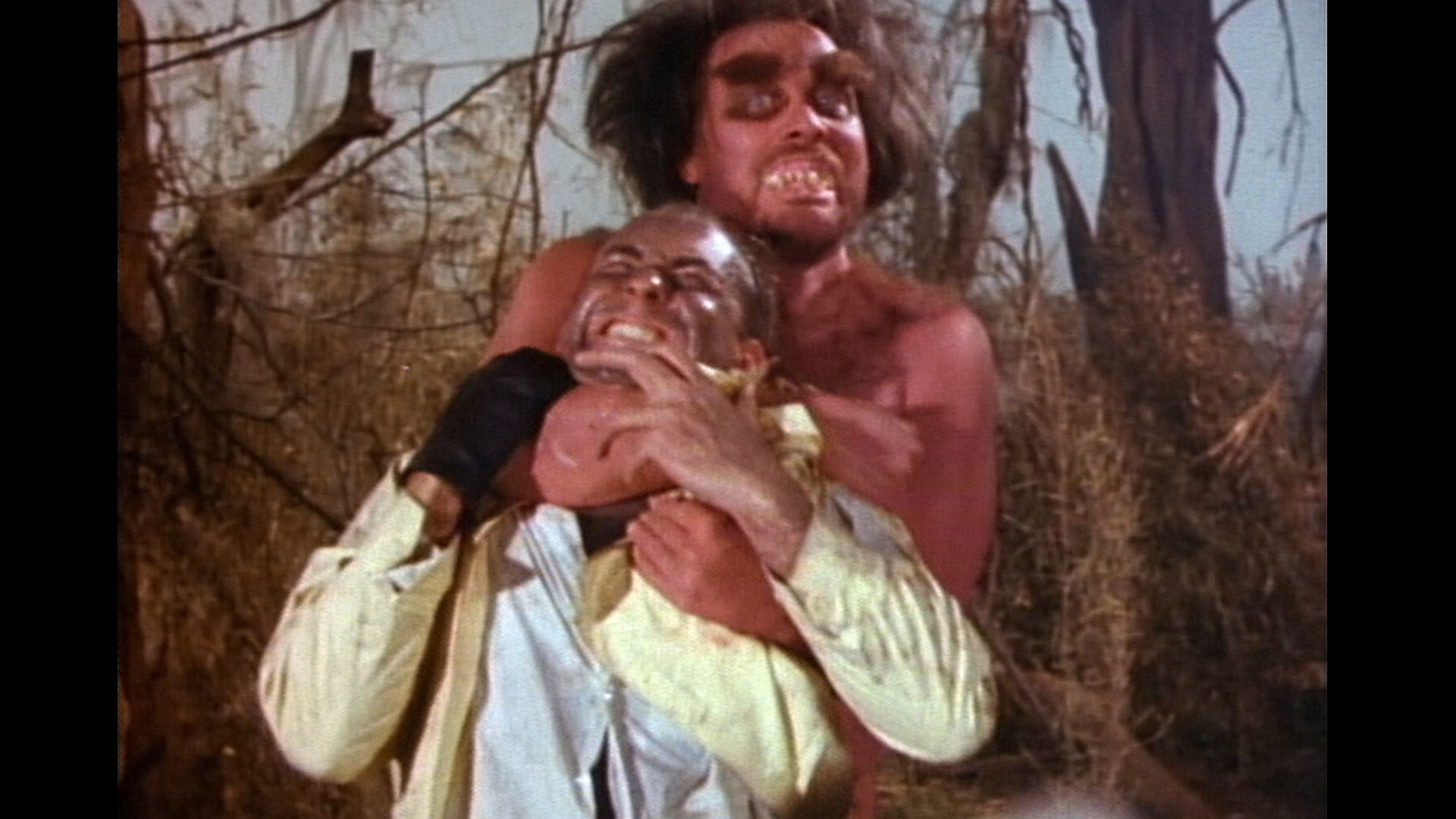 bloody
bloody 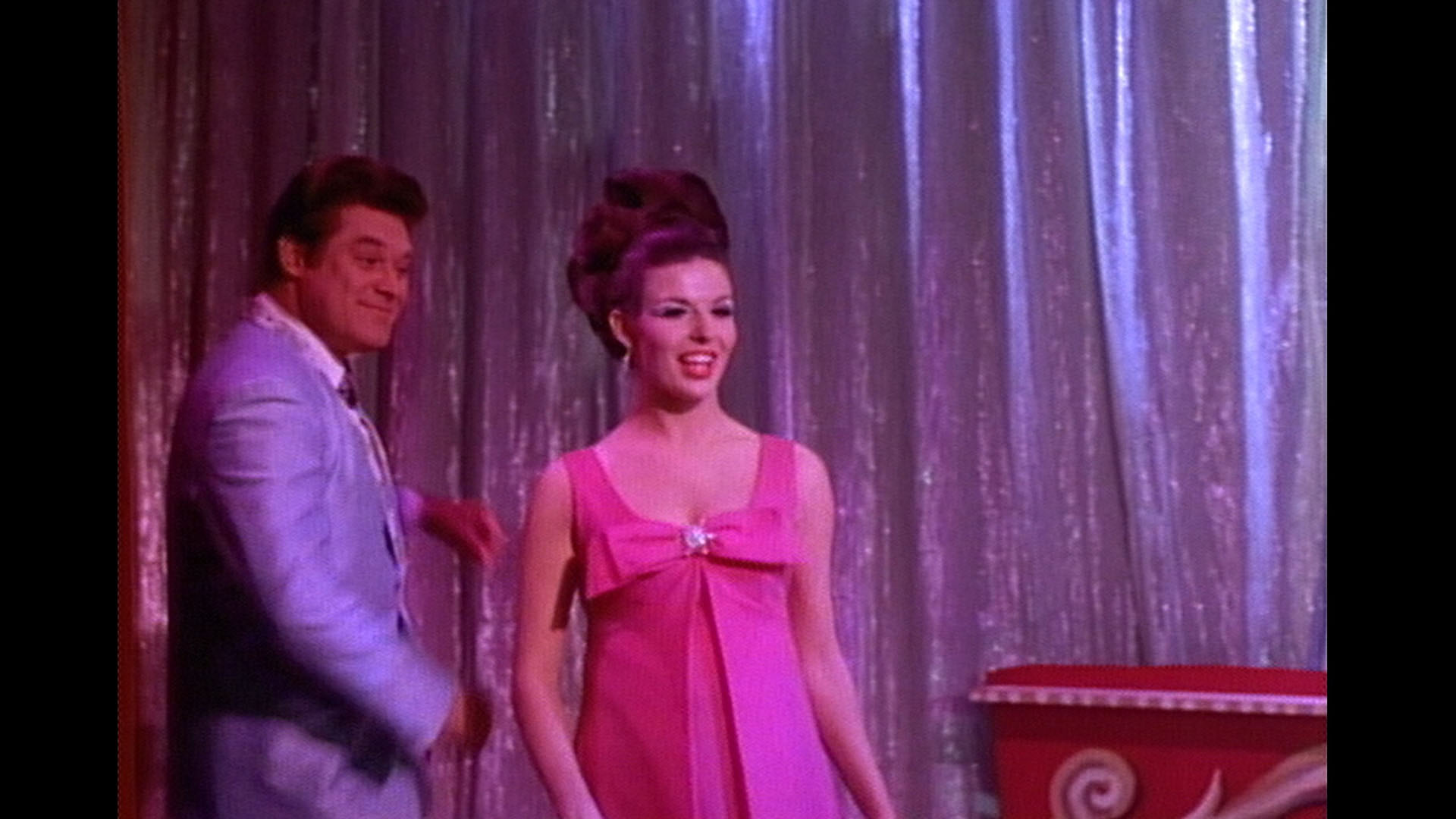 creature feature musical freak-out that marks the feverish climax of the Ormonds' secular filmmaking phase. Local rockabilly performer "Sleepy LaBeef" steals the show here with fake teeth and plentiful fake body hair as a savage swamp critter discovered by some hunters, who naturally drag him into civilization to make a fast buck... by sticking him in New Orleans burlesque shows surrounded by semi-naked women. Complete with quasi-mondo footage, insane strip routines, and the funniest severed arm gag this side of The Brain That Wouldn't Die, this is a true brain-melting experience with all three of the Ormonds getting in front of the camera this time (with little Tim crooning a number and June doing a particularly weird dance routine). A familiar staple on the PD video scene since the '80s, this one looks pretty solid here given the SD source with lots of Crayola-worthy bright colors. On top of that you get an essential audio commentary by McDonough and the film's other big scene stealer, entertainer Georgette Dante, a "queen of the carnival and Las Vegas, exotic dancer, clown, magician, costume designer, director, gangster's moll, and hat maker." Together they provide a rollicking track you really have to hear to believe; they have a great rapport together and have tons of tales about the Ormonds, the carny circuit, New Orleans, and tons more. You don't want to miss this one. Also included are radio spots for all three films.
creature feature musical freak-out that marks the feverish climax of the Ormonds' secular filmmaking phase. Local rockabilly performer "Sleepy LaBeef" steals the show here with fake teeth and plentiful fake body hair as a savage swamp critter discovered by some hunters, who naturally drag him into civilization to make a fast buck... by sticking him in New Orleans burlesque shows surrounded by semi-naked women. Complete with quasi-mondo footage, insane strip routines, and the funniest severed arm gag this side of The Brain That Wouldn't Die, this is a true brain-melting experience with all three of the Ormonds getting in front of the camera this time (with little Tim crooning a number and June doing a particularly weird dance routine). A familiar staple on the PD video scene since the '80s, this one looks pretty solid here given the SD source with lots of Crayola-worthy bright colors. On top of that you get an essential audio commentary by McDonough and the film's other big scene stealer, entertainer Georgette Dante, a "queen of the carnival and Las Vegas, exotic dancer, clown, magician, costume designer, director, gangster's moll, and hat maker." Together they provide a rollicking track you really have to hear to believe; they have a great rapport together and have tons of tales about the Ormonds, the carny circuit, New Orleans, and tons more. You don't want to miss this one. Also included are radio spots for all three films.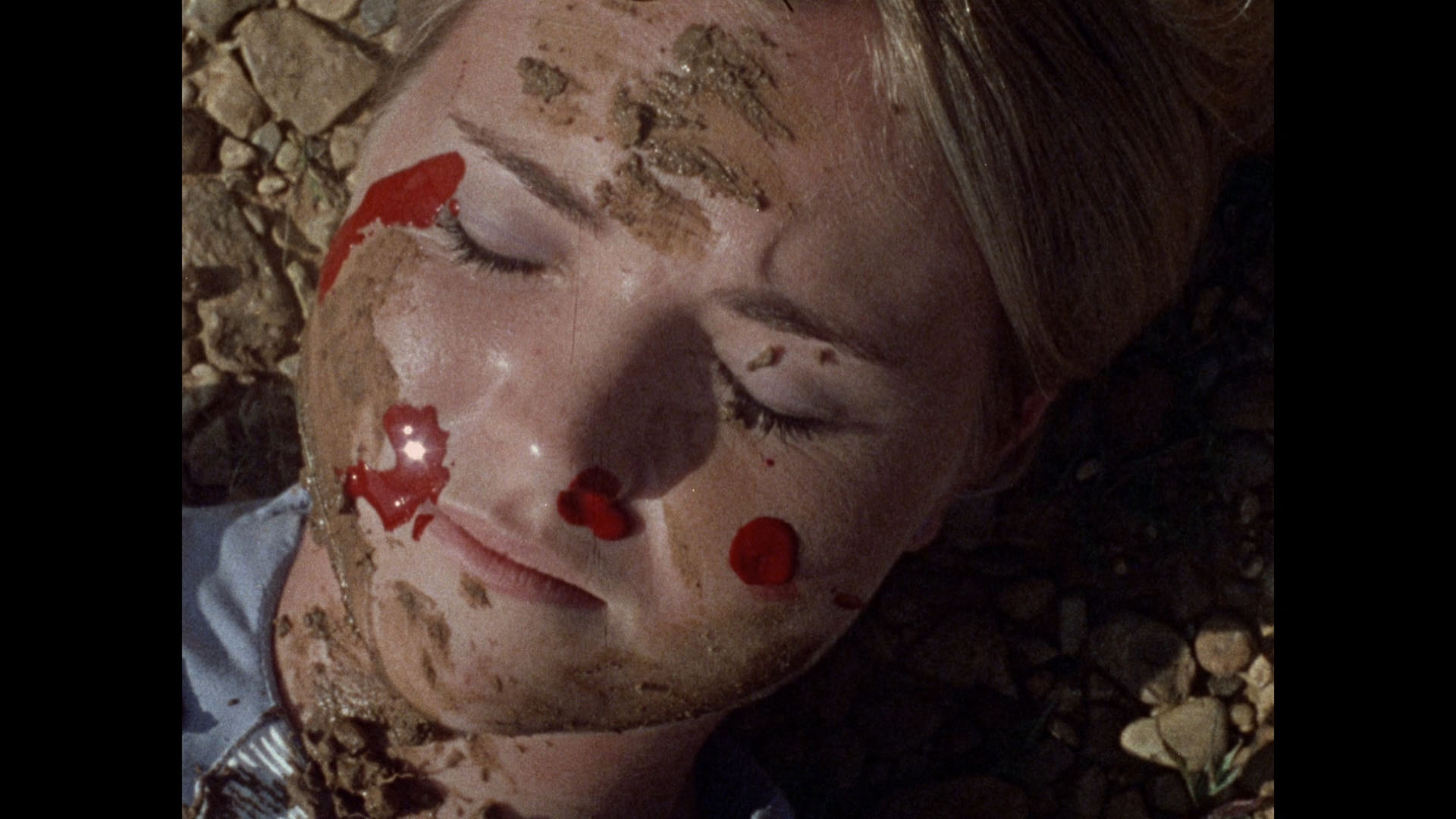 Following a near-death
Following a near-death 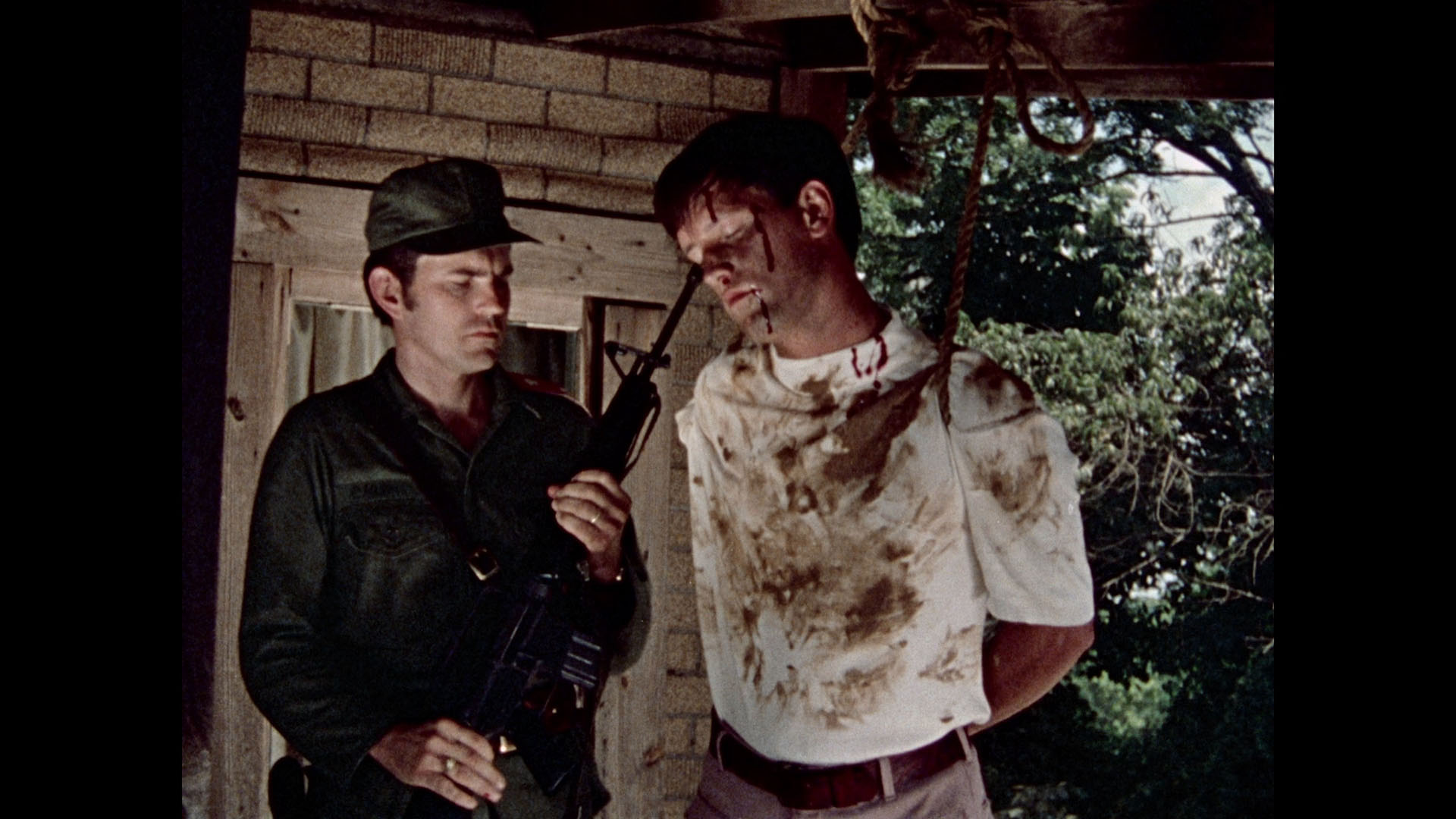 airplane experience, the Ormonds devoted their lives to God and accordingly dedicated their talents to a string of outrageous religious confections that fill out the remainder of the set. Disc three starts at full throttle with the most unforgettable film in the box and a surefire contender for the strangest horror film ever made: 1971's If Footmen Tire You, What Will Horses Do? (53m7s). Essentially the Ormonds were recommended to make a movie out of a particularly feverish sermon by Baptist evangelist Estus W. Pirkle, centered around a delirious paranoid vision of what might happen if God-fearing Christians allow Communism to take over America. Designed to be shown as a recruiting tool at churches rather than traditional theaters, this one unleashes torrents of insanity and gore as evil socialists with indeterminate accents try forcibly indoctrinate every Caucasian American in sight. Anyone who resists (especially little kids) gets turned into hamburger meat, while Pirkle's ongoing sermon (which ultimately serves to convert one wayward young lady in the congregation) gets more intense by the minute. The kind of full-throttle Christian scare film they just don't make anymore, Footmen ranks up there with 1972's A Thief in the Night (and its Mark IV sequels) at the top of the heap when it comes to the intersection of horror and God-fearing filmmaking. Long circulated on VHS in dupey editions, this one (and its two Pirkle-Ormond follow-ups) was given an impressive restoration in 2018 from the best surviving film source (a 16mm dupe neg) and streamed on Refn's website. Here you get the same excellent presentation, augmented with a lively commentary by Greg Pirkle and an enthusiastic Brian Rosenquist about Pirkle's desire to spread the word
airplane experience, the Ormonds devoted their lives to God and accordingly dedicated their talents to a string of outrageous religious confections that fill out the remainder of the set. Disc three starts at full throttle with the most unforgettable film in the box and a surefire contender for the strangest horror film ever made: 1971's If Footmen Tire You, What Will Horses Do? (53m7s). Essentially the Ormonds were recommended to make a movie out of a particularly feverish sermon by Baptist evangelist Estus W. Pirkle, centered around a delirious paranoid vision of what might happen if God-fearing Christians allow Communism to take over America. Designed to be shown as a recruiting tool at churches rather than traditional theaters, this one unleashes torrents of insanity and gore as evil socialists with indeterminate accents try forcibly indoctrinate every Caucasian American in sight. Anyone who resists (especially little kids) gets turned into hamburger meat, while Pirkle's ongoing sermon (which ultimately serves to convert one wayward young lady in the congregation) gets more intense by the minute. The kind of full-throttle Christian scare film they just don't make anymore, Footmen ranks up there with 1972's A Thief in the Night (and its Mark IV sequels) at the top of the heap when it comes to the intersection of horror and God-fearing filmmaking. Long circulated on VHS in dupey editions, this one (and its two Pirkle-Ormond follow-ups) was given an impressive restoration in 2018 from the best surviving film source (a 16mm dupe neg) and streamed on Refn's website. Here you get the same excellent presentation, augmented with a lively commentary by Greg Pirkle and an enthusiastic Brian Rosenquist about Pirkle's desire to spread the word 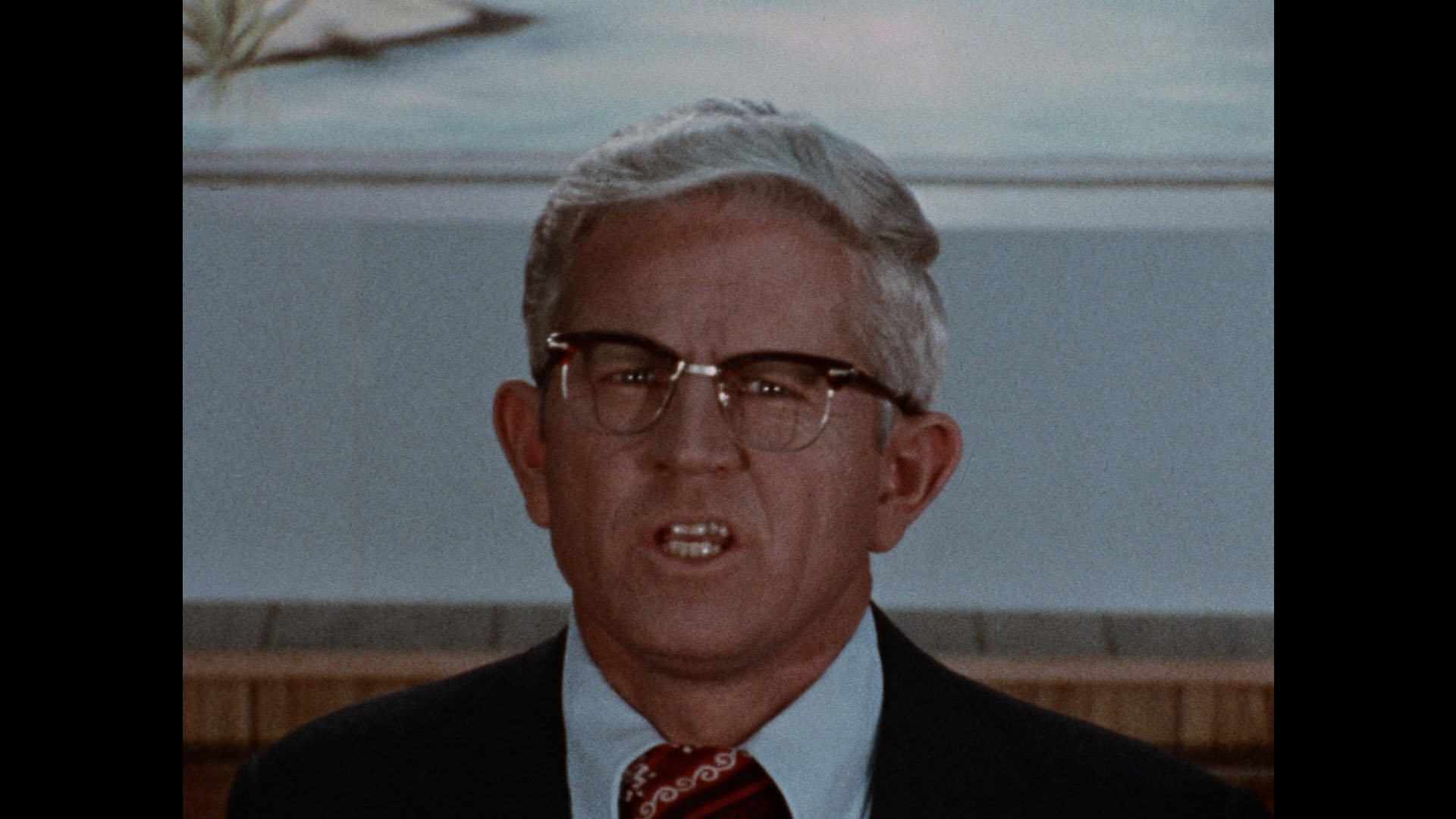
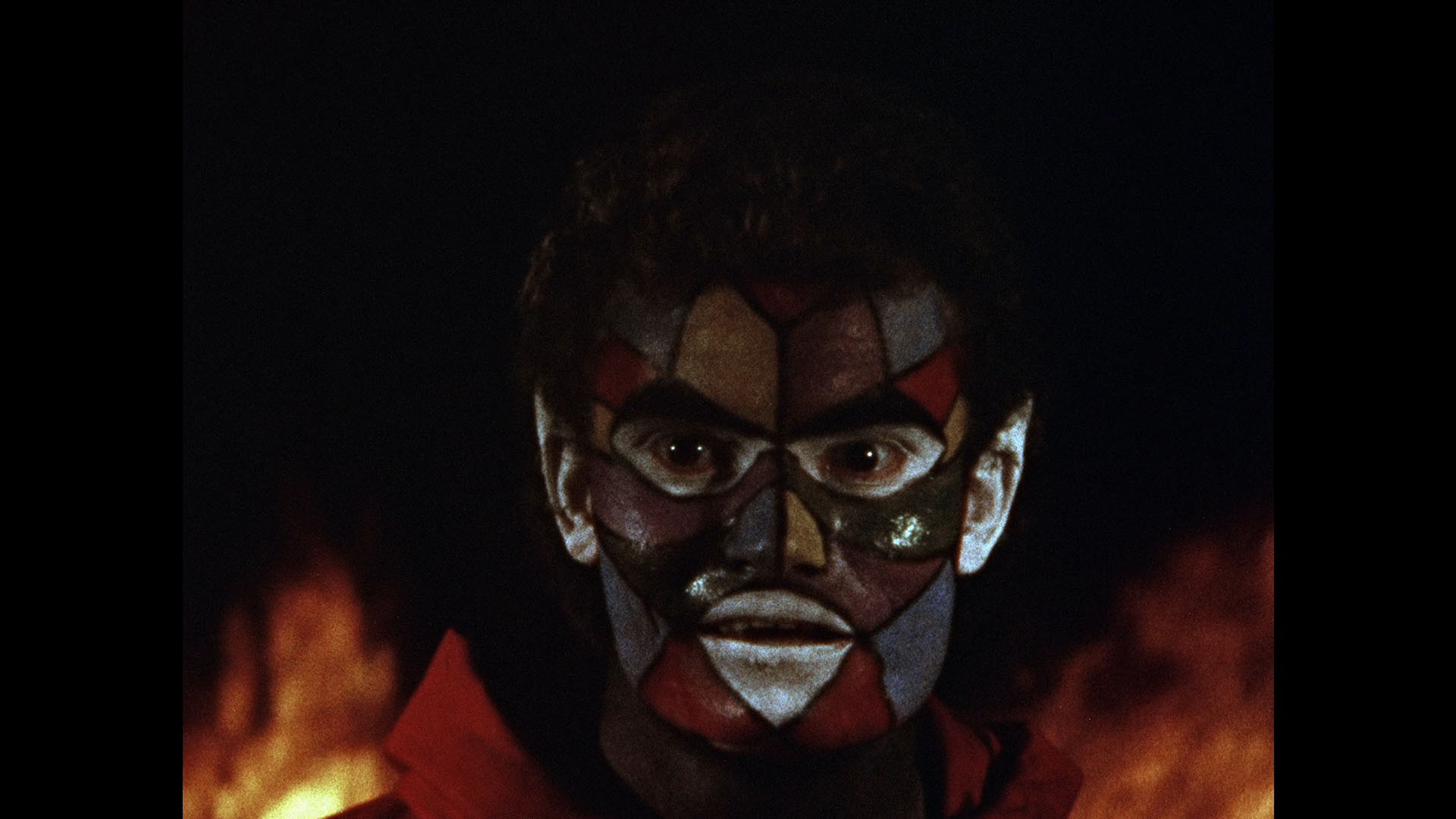 through cinema, the collaborations with the Ormonds, the congregation members roped into becoming actors, and much more.
through cinema, the collaborations with the Ormonds, the congregation members roped into becoming actors, and much more. 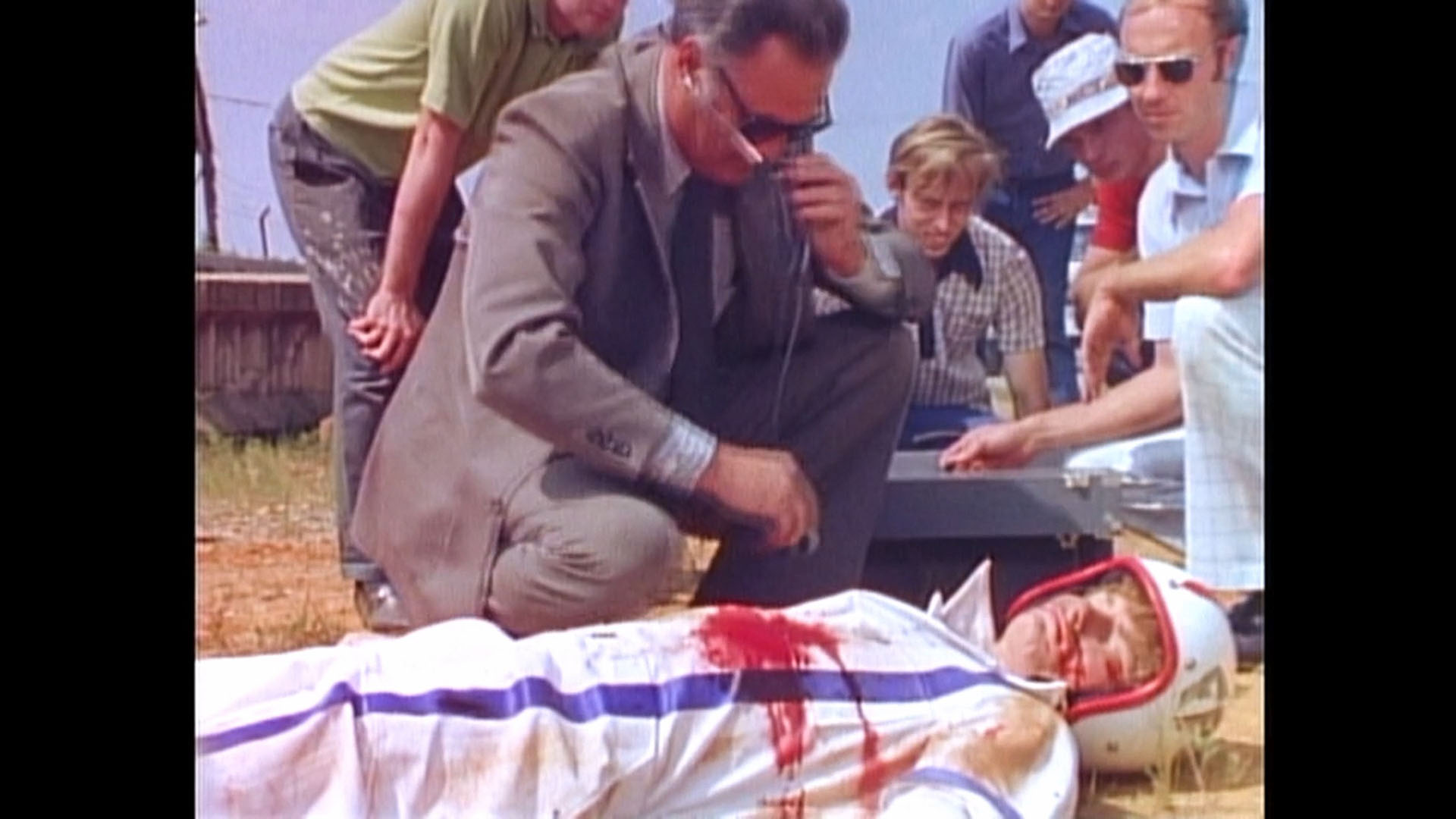 listening.
listening. 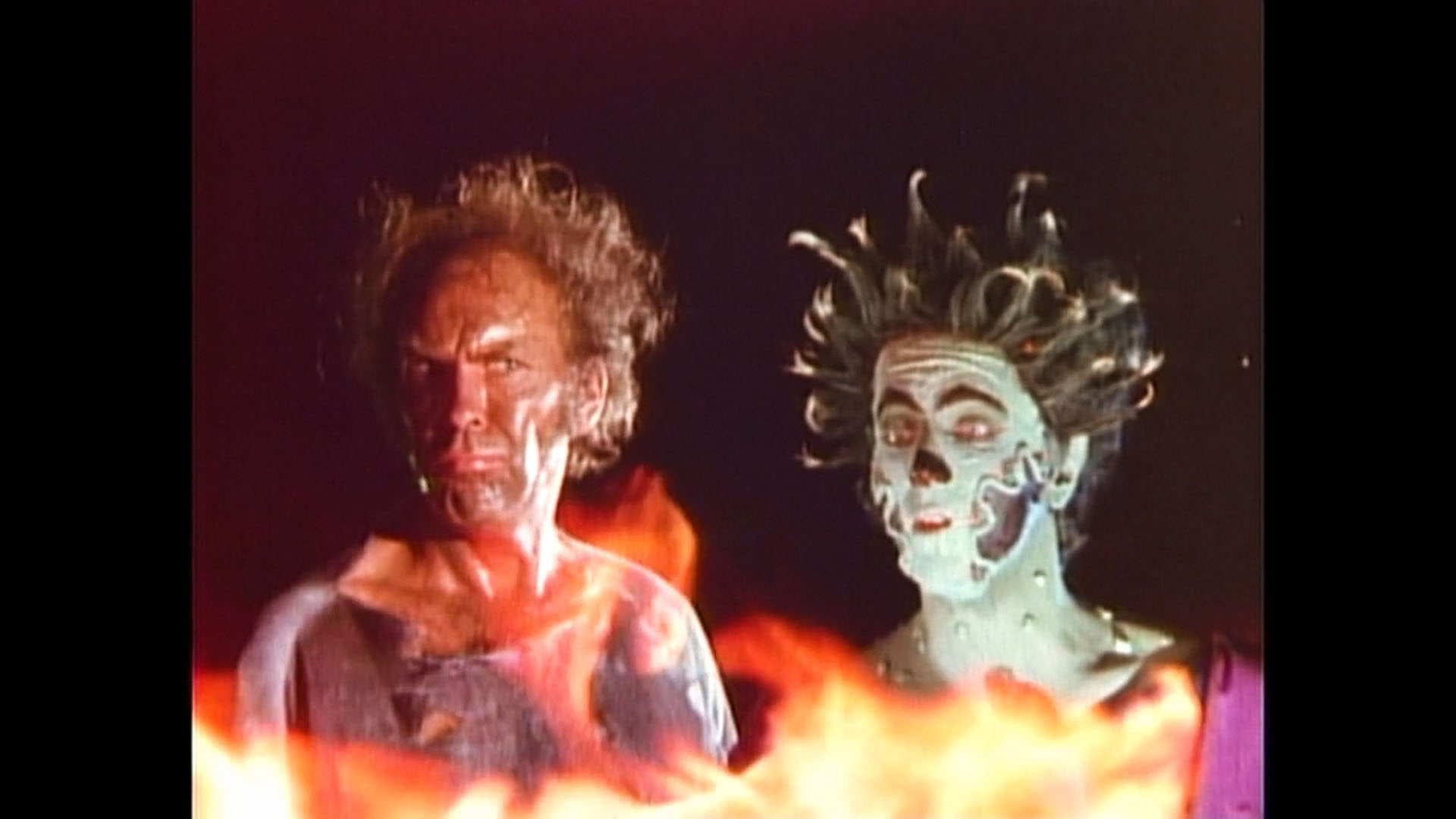 After that the Ormonds took a Pirkle break and made a project for the comparatively restrained fundamentalist preacher Dr. John R. Rice which resulted in 1976's The Grim Reaper (59m4s), here presented from the best surviving SD master. Here Tim plays a young man whose nonbeliever older brother dies in a racing accident, which leaves him and his devout mom to try to save the soul of his dad. However, the family dabbles in lots of new age mystical stuff that might endanger their very souls and lead to a run-in with the personification of death itself. Of course, it's all basically an excuse for Rice to trot out lots of iffy guest stars like Jerry Falwell, Jack Van Impe, and Bob Gray, none of whom are exactly ideal role models. Once again we get a guided tour through the flames of hell, complete with June in crazy makeup and lots of lunatic demon designs that made this one a favorite on the tape-trading circuit back in the '90s.
After that the Ormonds took a Pirkle break and made a project for the comparatively restrained fundamentalist preacher Dr. John R. Rice which resulted in 1976's The Grim Reaper (59m4s), here presented from the best surviving SD master. Here Tim plays a young man whose nonbeliever older brother dies in a racing accident, which leaves him and his devout mom to try to save the soul of his dad. However, the family dabbles in lots of new age mystical stuff that might endanger their very souls and lead to a run-in with the personification of death itself. Of course, it's all basically an excuse for Rice to trot out lots of iffy guest stars like Jerry Falwell, Jack Van Impe, and Bob Gray, none of whom are exactly ideal role models. Once again we get a guided tour through the flames of hell, complete with June in crazy makeup and lots of lunatic demon designs that made this one a favorite on the tape-trading circuit back in the '90s. 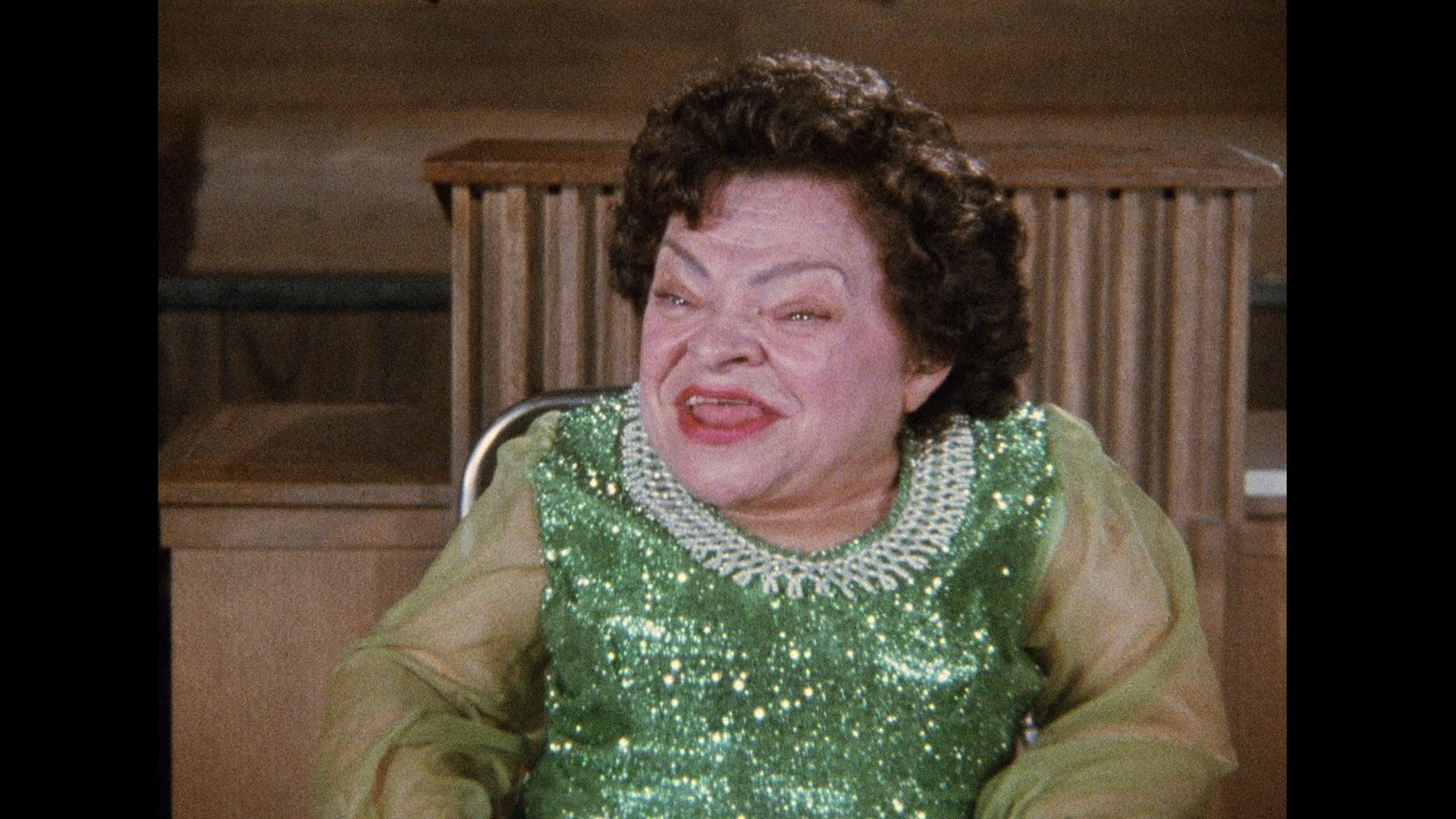 he last and most subdued of the Pirkle-Ormond team-ups, 1977's The Believer's Heaven (60m18s), tries the positive reinforcement route by focusing on the rewards
he last and most subdued of the Pirkle-Ormond team-ups, 1977's The Believer's Heaven (60m18s), tries the positive reinforcement route by focusing on the rewards 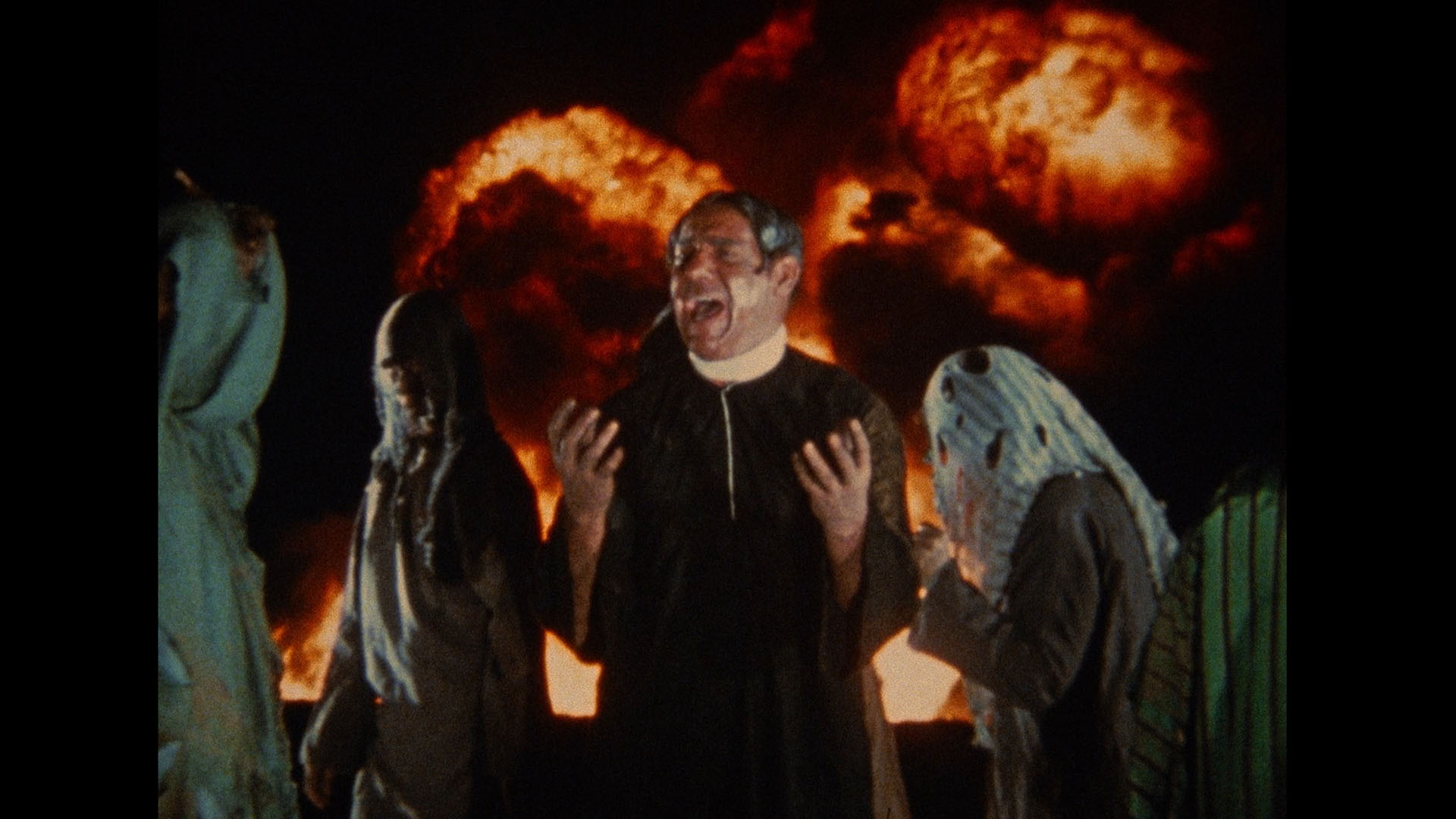 of what waits above when true believers pass on. However, Pirkle's stern-faced delivery doesn't seem all that encouraging in what amounts to another hour-long sermon, here spending less time on images of damnation (though you still get a bit of that) in favor of more Biblical recreations by Southerners visiting the Holy Land. In case you're worried this one is going to be too tasteful by comparison though, Ormond and company deliver a shocker of a moment when Pirkle explains how the physically disabled will enjoy traditional bodies in the afterlife -- complete with a physical demonstration that will have anyone watching doubting their sanity. It all comes to a jaw-dropping climax when diminutive gospel singer Little Evelyn Talbert (who, yes, cut her own albums) delivers a musical interlude for the ages. Once again the restoration here is top-notch, and needless to say, the Pirkle trilogy alone is reason enough to scarf up this set. Other glorious goodies on disc three include a berserk 1970 audio recording of a Pirkle sermon (63m30s) complete with a rant about the evils of show business (even slamming the recently deceased Sharon Tate), plus The Grim Reaper radio spots hawked by Ron
of what waits above when true believers pass on. However, Pirkle's stern-faced delivery doesn't seem all that encouraging in what amounts to another hour-long sermon, here spending less time on images of damnation (though you still get a bit of that) in favor of more Biblical recreations by Southerners visiting the Holy Land. In case you're worried this one is going to be too tasteful by comparison though, Ormond and company deliver a shocker of a moment when Pirkle explains how the physically disabled will enjoy traditional bodies in the afterlife -- complete with a physical demonstration that will have anyone watching doubting their sanity. It all comes to a jaw-dropping climax when diminutive gospel singer Little Evelyn Talbert (who, yes, cut her own albums) delivers a musical interlude for the ages. Once again the restoration here is top-notch, and needless to say, the Pirkle trilogy alone is reason enough to scarf up this set. Other glorious goodies on disc three include a berserk 1970 audio recording of a Pirkle sermon (63m30s) complete with a rant about the evils of show business (even slamming the recently deceased Sharon Tate), plus The Grim Reaper radio spots hawked by Ron 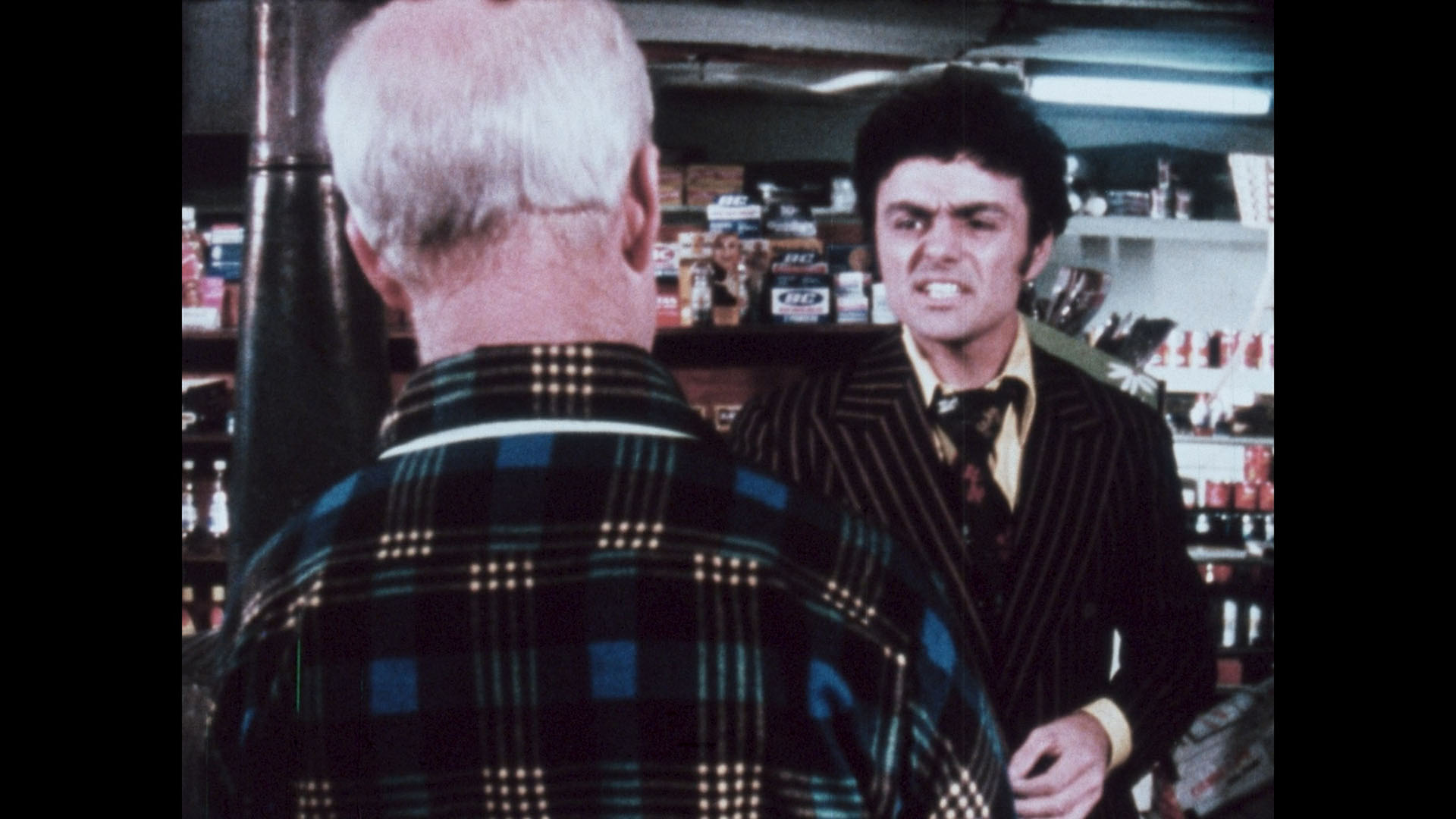 himself.
himself.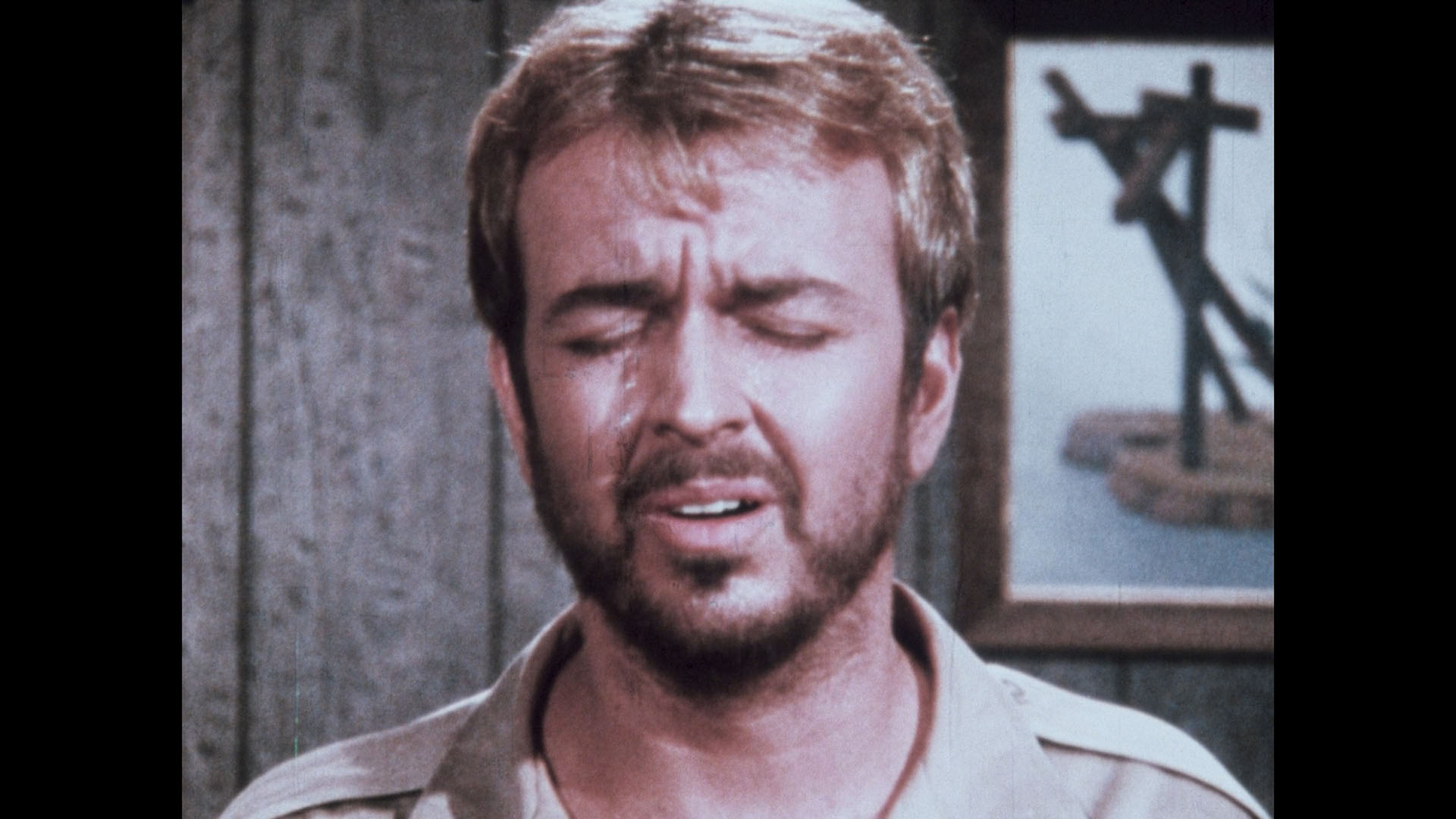 Finally on disc four we get to the end of the Ormond family collaborations including Ron's final work and Tim's ascension to filmmaker in his own right. 1979's 39 Stripes (59m30s) from Hope Aglow Ministries is a non-Pirkel evangelical film about ministering to those behind bars as seen through the dramatized story of Ed Martin, "the man who broke rocks." Tim plays the young Ed in flashbacks as he goes from a life of petty crime and corporal punishment to preaching the word of God. This would be Ron's swan song before he died of cancer, and though it doesn't ladle on the shock value at all, the chain gang sequences still remind you where he came from -- and watching Tim grow up through these entries is a strangely compelling experience. This one's taken from a worn but passable film print, certainly better than the dupey (and scarce) VHS copies that have been around for ages.
Finally on disc four we get to the end of the Ormond family collaborations including Ron's final work and Tim's ascension to filmmaker in his own right. 1979's 39 Stripes (59m30s) from Hope Aglow Ministries is a non-Pirkel evangelical film about ministering to those behind bars as seen through the dramatized story of Ed Martin, "the man who broke rocks." Tim plays the young Ed in flashbacks as he goes from a life of petty crime and corporal punishment to preaching the word of God. This would be Ron's swan song before he died of cancer, and though it doesn't ladle on the shock value at all, the chain gang sequences still remind you where he came from -- and watching Tim grow up through these entries is a strangely compelling experience. This one's taken from a worn but passable film print, certainly better than the dupey (and scarce) VHS copies that have been around for ages. 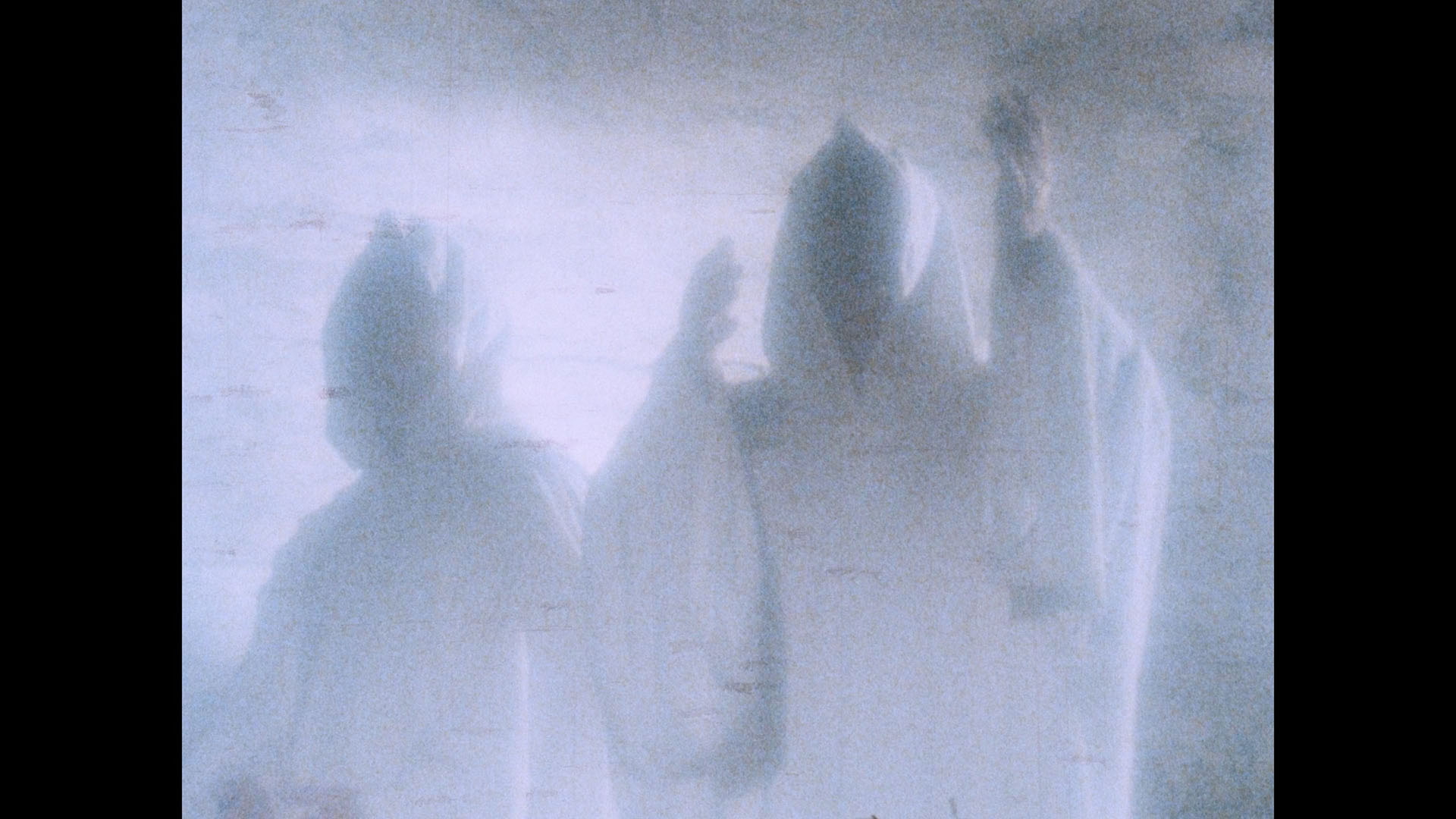 story of fallen Roger, who wants to be saved through reenactments of events like Abraham's sacrifice and the horsemen of the apocalypse. Lifting copious footage from his dad's work, Tim displays some of the family showmanship here
story of fallen Roger, who wants to be saved through reenactments of events like Abraham's sacrifice and the horsemen of the apocalypse. Lifting copious footage from his dad's work, Tim displays some of the family showmanship here 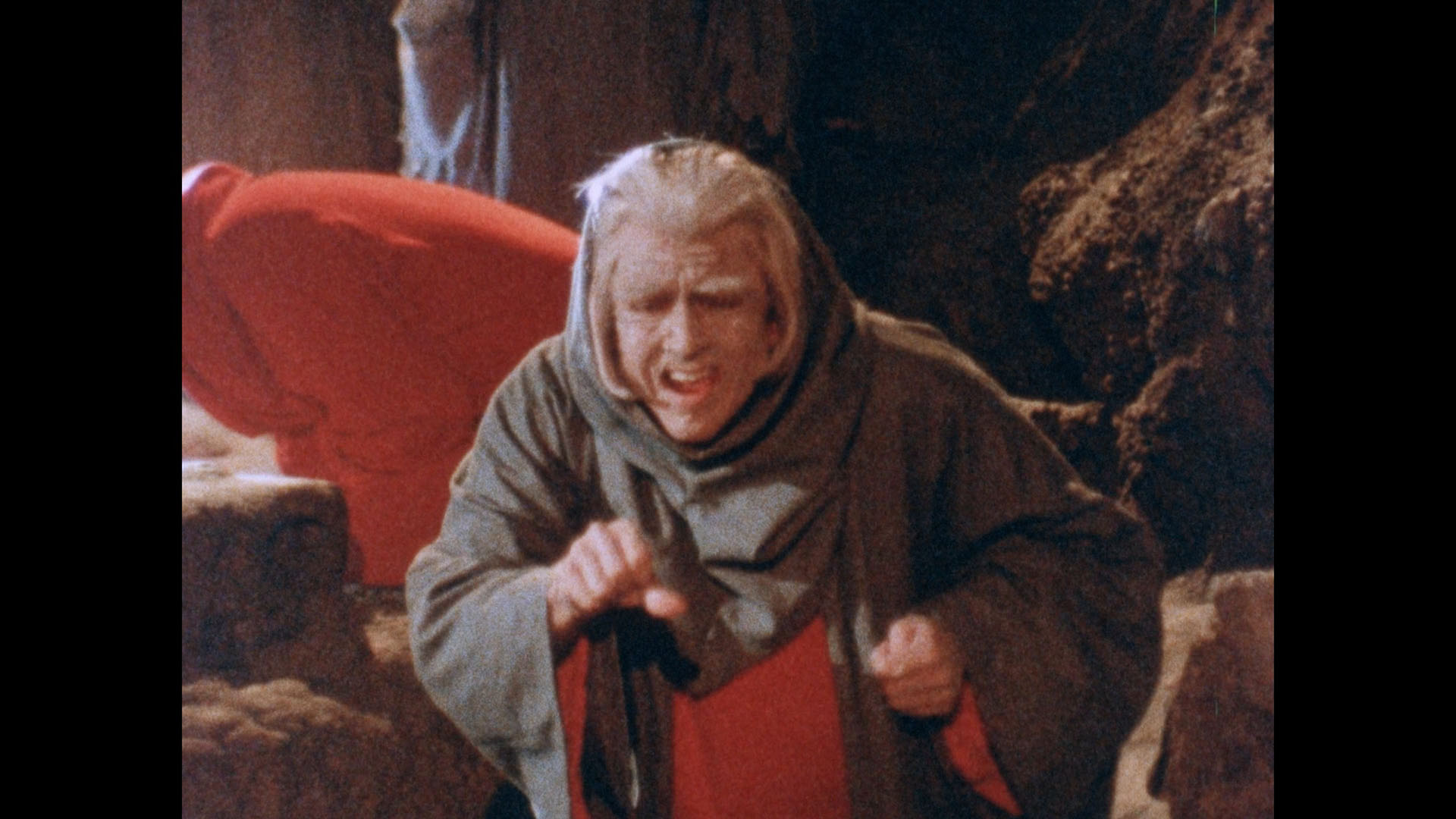 including a bizarre bit of Babylonian special effects that feels like it wandered out of a Kenneth Anger film. Plus you get an actual appearance by the Antichrist here (with hellish fashion sense to boot) and the usual Bible reenactments and a quick pit stop in hell. Tim and McDonough are on hand again here for a new audio commentary chatting about how this was initially supposed to be directed by Ron (who got to the preproduction stage) and what Tim brought to the table from a directorial standpoint after working behind the camera for so long with his family. This one's also pulled from a film print and looks fine given the modest nature of the source.
including a bizarre bit of Babylonian special effects that feels like it wandered out of a Kenneth Anger film. Plus you get an actual appearance by the Antichrist here (with hellish fashion sense to boot) and the usual Bible reenactments and a quick pit stop in hell. Tim and McDonough are on hand again here for a new audio commentary chatting about how this was initially supposed to be directed by Ron (who got to the preproduction stage) and what Tim brought to the table from a directorial standpoint after working behind the camera for so long with his family. This one's also pulled from a film print and looks fine given the modest nature of the source. 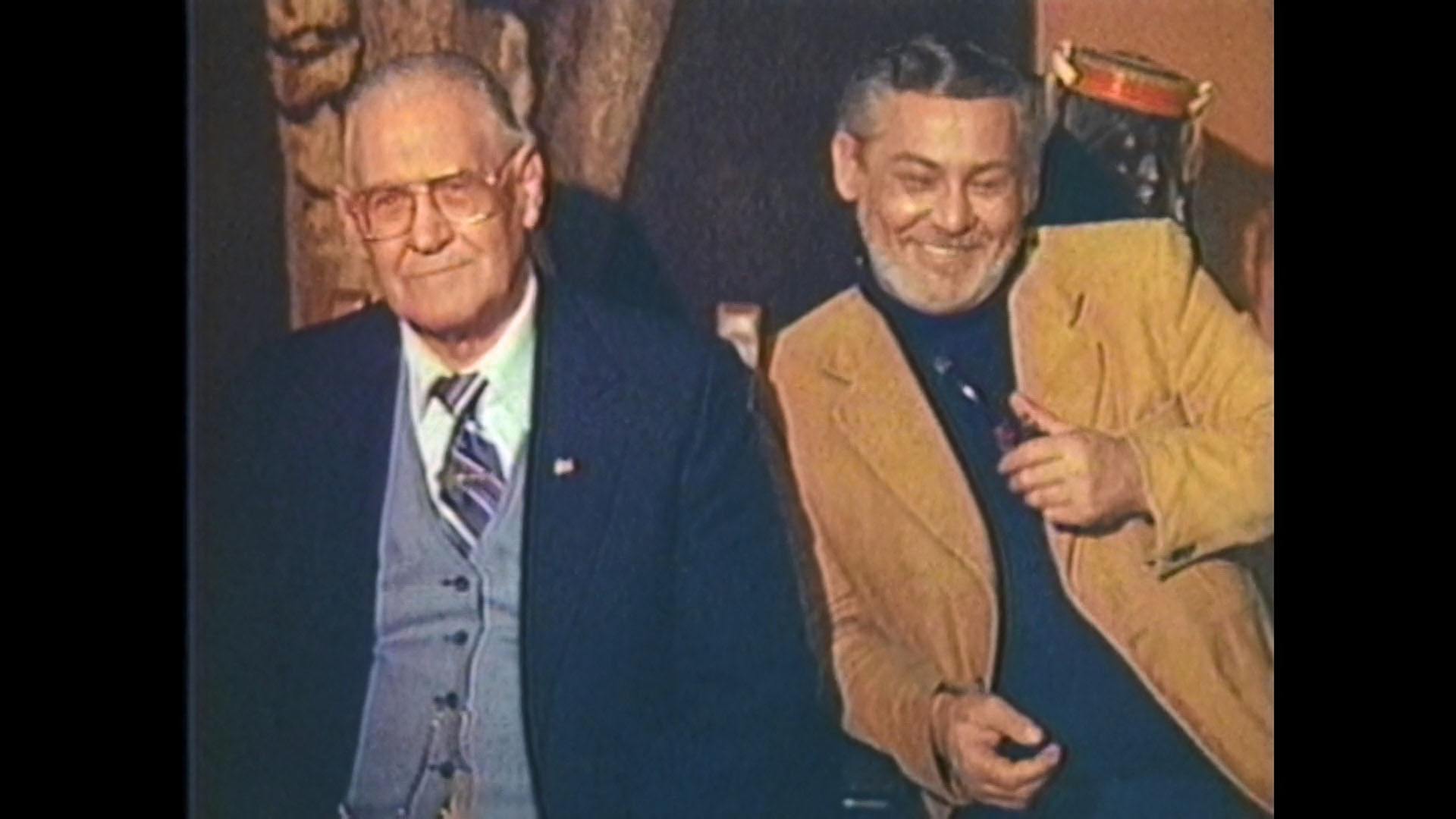 ) start with
) start with 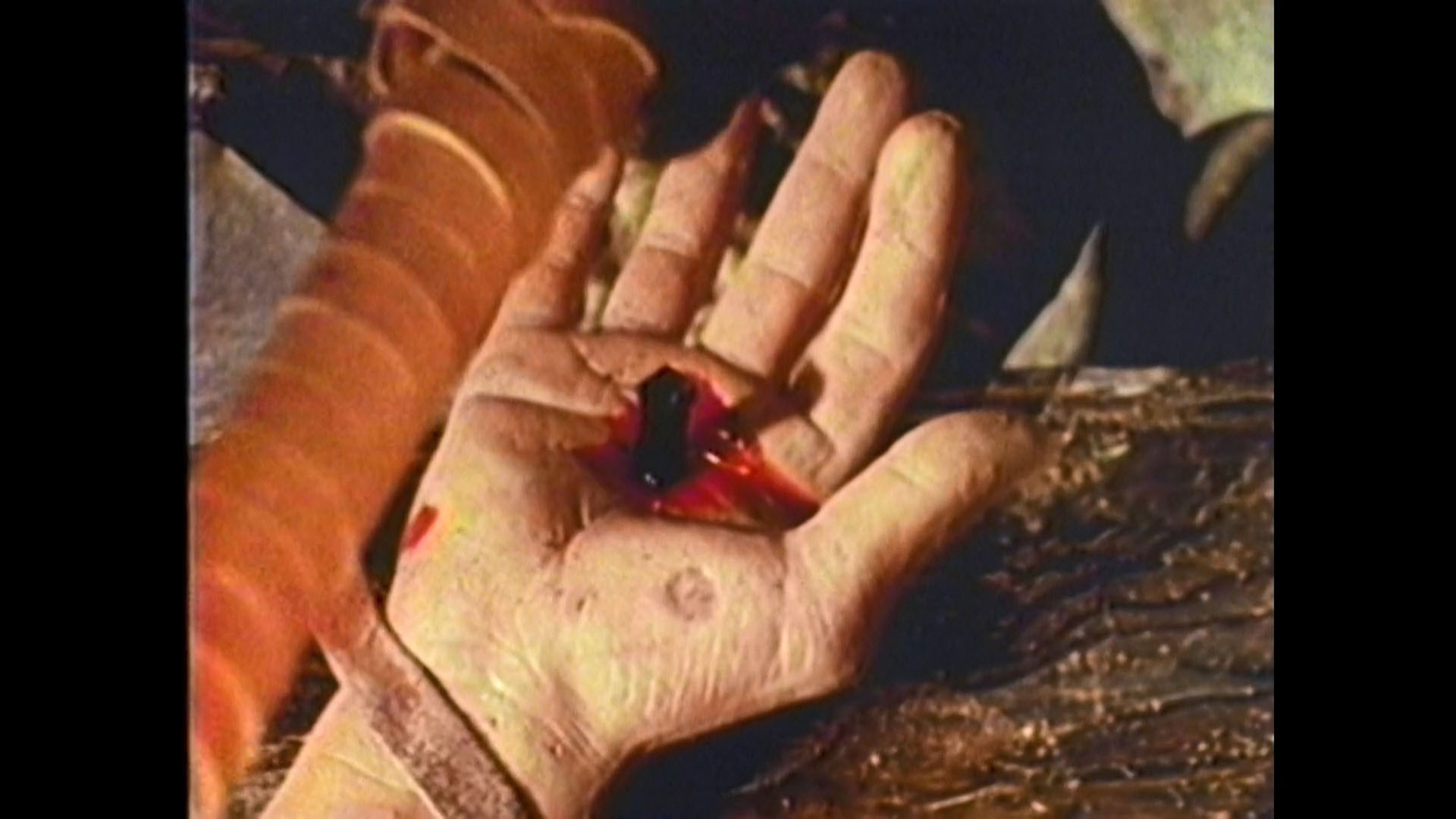 1987's A Tribute to Houdini (59m49s), a shot-on-video tribute to the famous illusionist with Calvert doing a string of performances in between various biographical tidbits (and a wild extended cameo from June). Then in 1992's Lash LaRue: A Man and His Memories (70m30s), the performer offers a free-flowing look back at his life and career with some fanciful digressions along the way that should get sampled into an album someday. Finally June herself takes center stage in a pair of tributes from her son: 1997s June Carr: The Virtual Vaudevillian (30m17s), featuring a string of comedy skits performed in front of a green screen, and 1997's Forgotten Memories (20m2s), in which she invites a stranger into her home and reminisces about days gone by. Also included are a batch of Forgotten Memories production footage (14m49s) and a pair of 39 Stripes radio spots. The set is limited to 6,000 units for the U.K. and the U.S., including five art cards in addition to the aforementioned book (which you should read before diving in for a full appreciation).
1987's A Tribute to Houdini (59m49s), a shot-on-video tribute to the famous illusionist with Calvert doing a string of performances in between various biographical tidbits (and a wild extended cameo from June). Then in 1992's Lash LaRue: A Man and His Memories (70m30s), the performer offers a free-flowing look back at his life and career with some fanciful digressions along the way that should get sampled into an album someday. Finally June herself takes center stage in a pair of tributes from her son: 1997s June Carr: The Virtual Vaudevillian (30m17s), featuring a string of comedy skits performed in front of a green screen, and 1997's Forgotten Memories (20m2s), in which she invites a stranger into her home and reminisces about days gone by. Also included are a batch of Forgotten Memories production footage (14m49s) and a pair of 39 Stripes radio spots. The set is limited to 6,000 units for the U.K. and the U.S., including five art cards in addition to the aforementioned book (which you should read before diving in for a full appreciation).
![]()